Creating inviting, functional outdoor spaces often hinges on the quality and style of shade you introduce. From permanent structures that blend seamlessly with your architecture to flexible solutions that adapt to changing needs, there are countless ways to keep cool, protect furnishings, and define your patio, deck, or garden. Whether you favor lush greenery, innovative fabric designs, or sleek metal constructions, these 20 shade ideas cover a spectrum of aesthetics, budgets, and installation complexities. Read on to discover versatile options—from the classic to the cutting-edge—that will inspire your next backyard upgrade.
1. Retractable Awnings
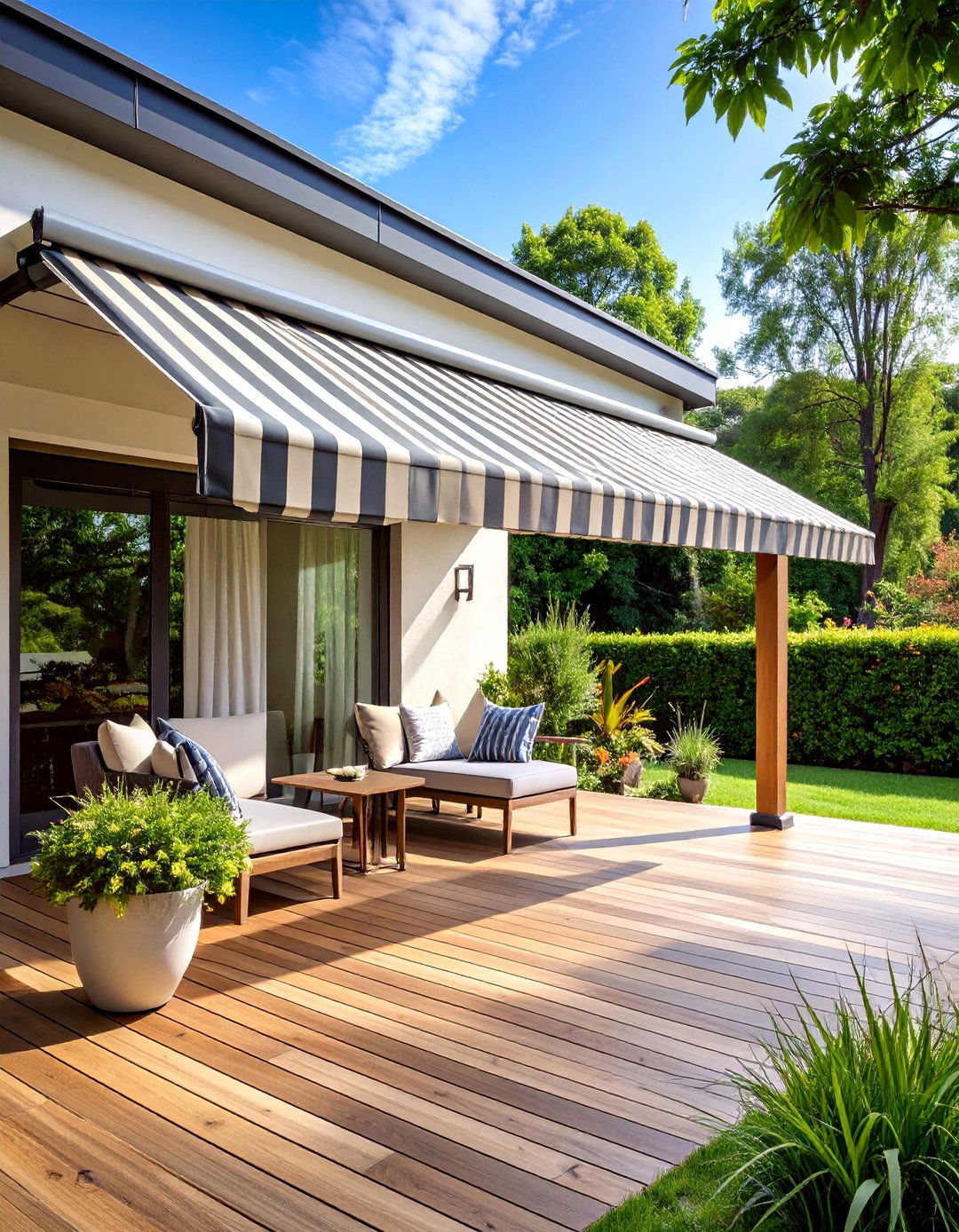
Retractable awnings offer the best of both worlds: sun when you want it, shade when you don’t. Mounted to your home’s exterior wall, they extend out on pivoting arms at the push of a button or the turn of a crank. Fabrics range from weather-resistant acrylics in bold stripes to sleek solids that complement modern façades. Because they retract fully against the house, they’re protected from wind and storms when not in use, extending their lifespan. Ideal for patios, decks, and even storefronts, these systems can be motorized with sensors that retract at high wind speeds or when direct sun diminishes.
2. Pergolas with Climbing Vines
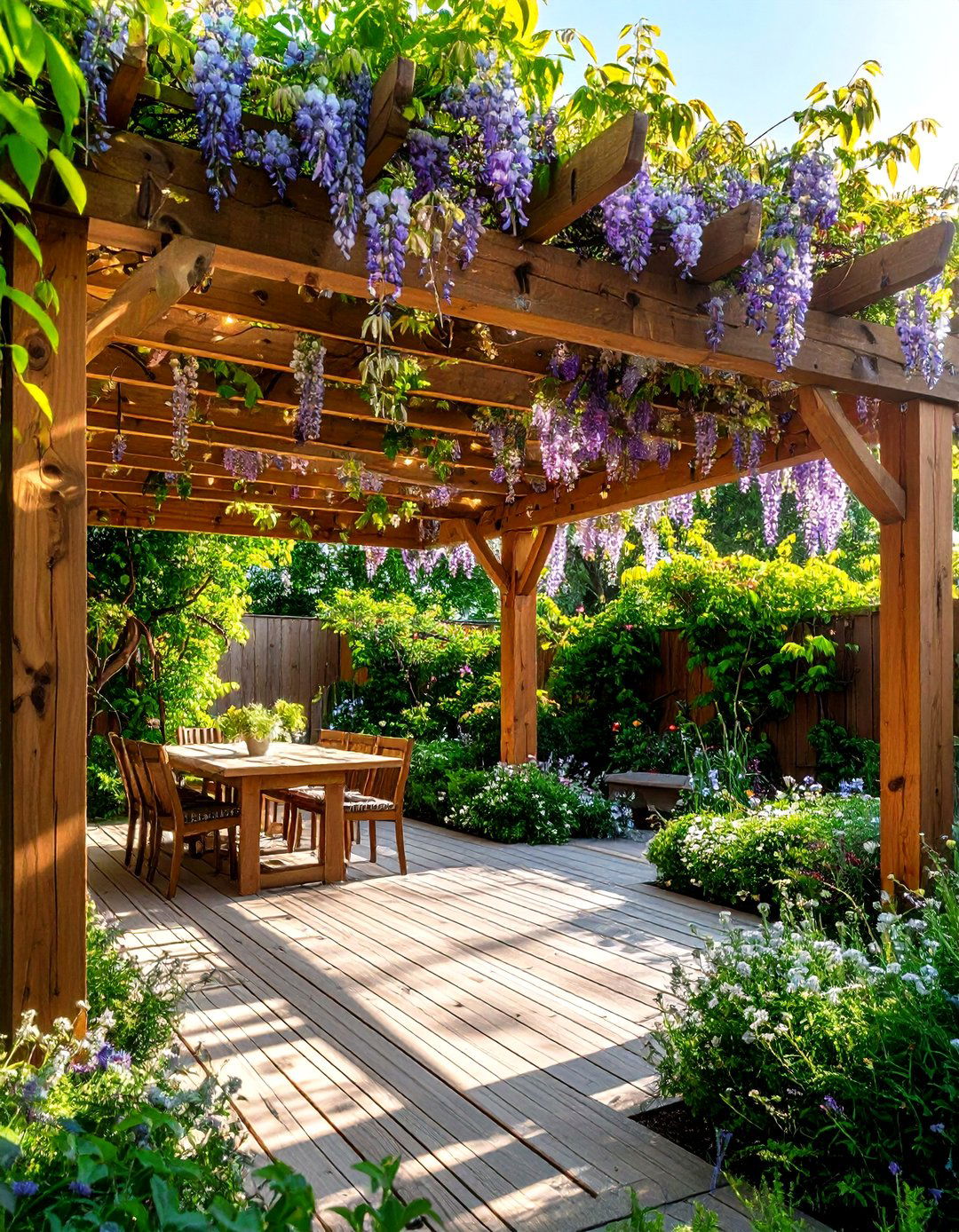
Pergolas create architectural interest while supporting climbing plants such as wisteria, jasmine, and grapevines that weave a living canopy overhead. As vines mature, their foliage thickens, casting cooling shade that shifts with the sun’s angle. Wooden pergolas—cedar, redwood, or teak—add warmth and can be left to weather to a silvery patina. Metal frames deliver slender, contemporary lines. Unlike solid roofs, a vine-covered pergola allows dappled light to filter through, nurturing shade-tolerant understory plantings. Seasonal changes in leaf density also let sunlight warm spaces in cooler months, making pergolas both beautiful and functional year-round.
3. Shade Sails

Shade sails are tensioned fabric panels fixed between posts or existing structures, creating a modern sculptural effect. Made from UV-resistant mesh or coated polyester, they block up to 95% of harmful rays while allowing air to circulate. Their triangular or quadrilateral shapes can be overlapped for layered coverage or angled to direct rainwater away. Installation involves anchoring stainless-steel hardware into sturdy supports and adjusting turnbuckles to achieve proper tension. Available in vibrant colors like teal, coral, or neutral greys, shade sails work well over play areas, hot tubs, and open patios, offering a cost-effective and visually striking solution.
4. Louvered Roof Systems
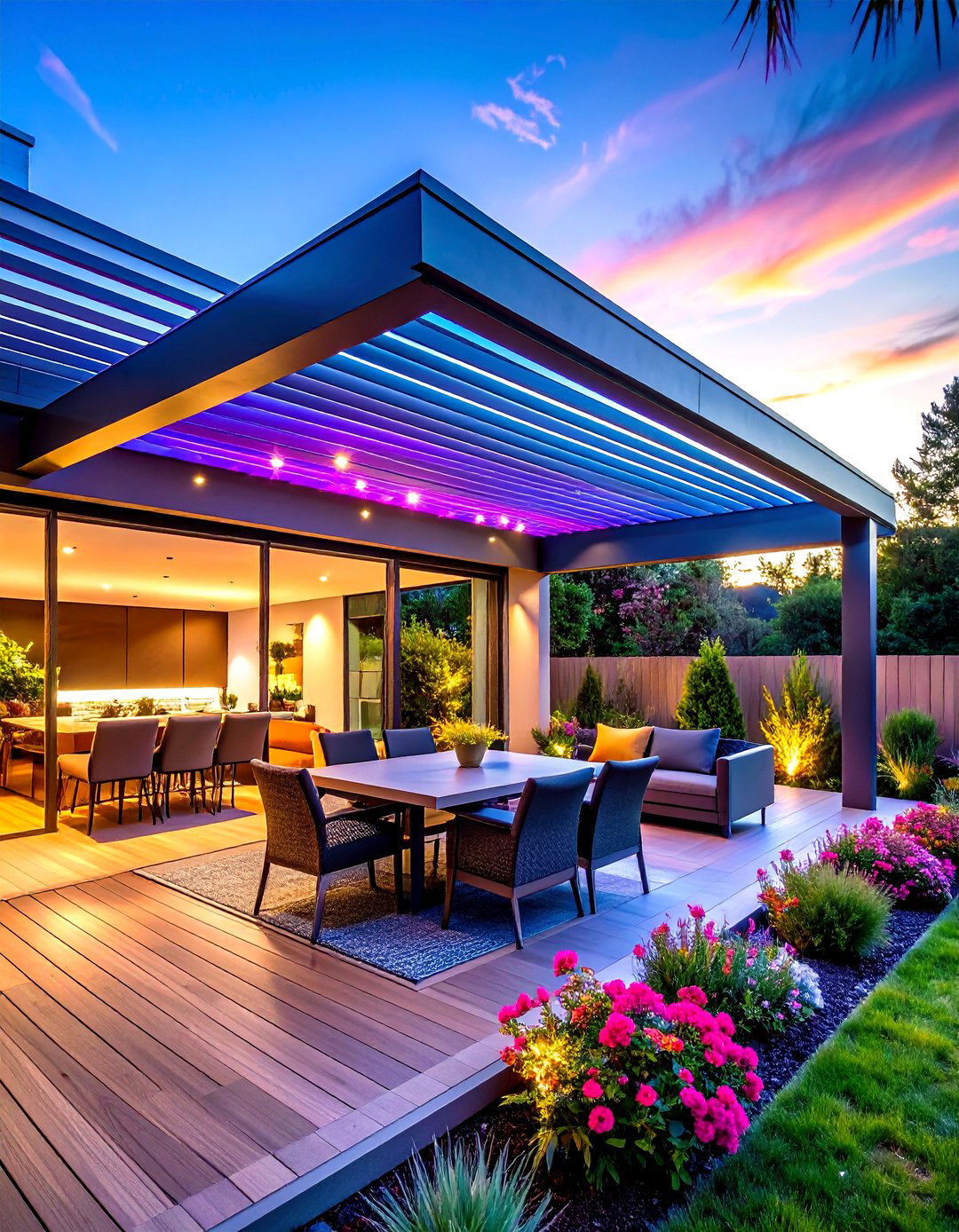
Motorized louvered roofs provide ultimate control over sun, shade, and ventilation. With aluminum slats that rotate up to 140 degrees, you can fully open the roof to bask in the sun, tilt it for diffuse light, or close it completely to stay dry during rain. Integrated gutters channel water away, and add-ons like ceiling fans or recessed lighting transform the covered space into an all-weather room. These systems mount onto freestanding frames or attach to existing structures, with powder-coat finishes that resist corrosion. While a premium option, louvered roofs deliver sleek, year-round performance and can boost property value significantly.
5. Sail Cloth Umbrellas
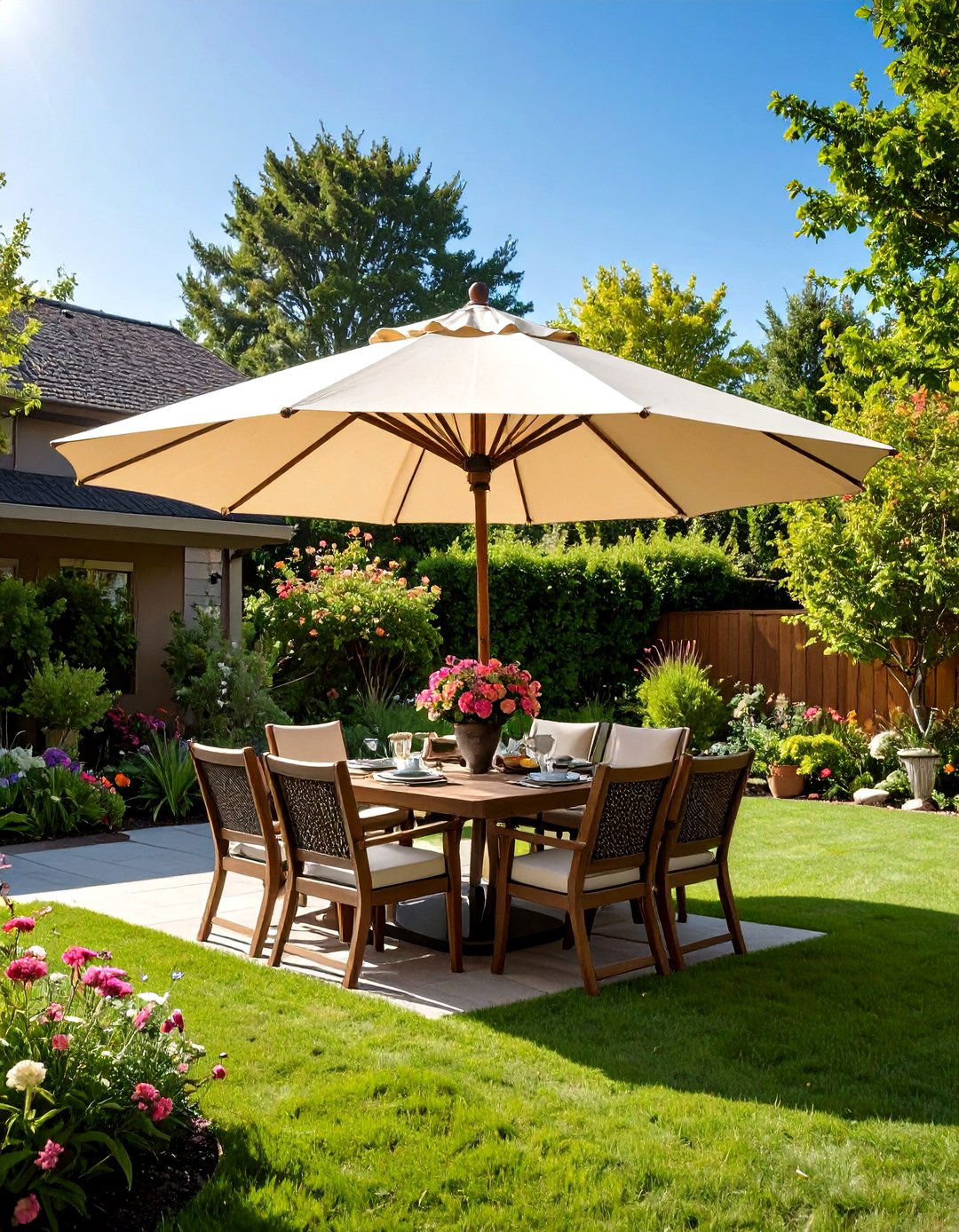
Oversized market umbrellas—sometimes called sail cloth umbrellas—offer flexible, portable shade without a permanent structure. With diameters ranging from six to twelve feet, their vented canopies stabilize in wind while deflecting sunlight. Aluminum or fiberglass ribs support high-density polyester fabric treated for UV and mildew resistance. Many feature crank lifts and tilt mechanisms, allowing you to angle the canopy throughout the day. Mounted in heavy-duty bases or through table centers, they can be relocated as seating arrangements change. Because they require no installation and come in a rainbow of colors and patterns, sail cloth umbrellas are perfect for renters or anyone seeking a no-commitment shade option.
6. Shade Pergolas with Retractable Fabric

Combining pergolas and retractable fabric creates a hybrid that offers both structure and adaptability. A fixed pergola frame supports motorized fabric panels that slide on tracks, letting you cover the space completely or retract the canopy at will. The fabric—often a PVC-coated polyester—blocks UV light and sheds water when needed. When retracted, you enjoy an open-air pergola ready for vine growth or string lights. This solution suits patios where permanent shade isn’t always desired, such as evening gatherings where starlight is welcome. Available in custom sizes and colors, retractable-fabric pergolas balance sturdiness with flexibility.
7. Bamboo or Reed Roll-Up Shades
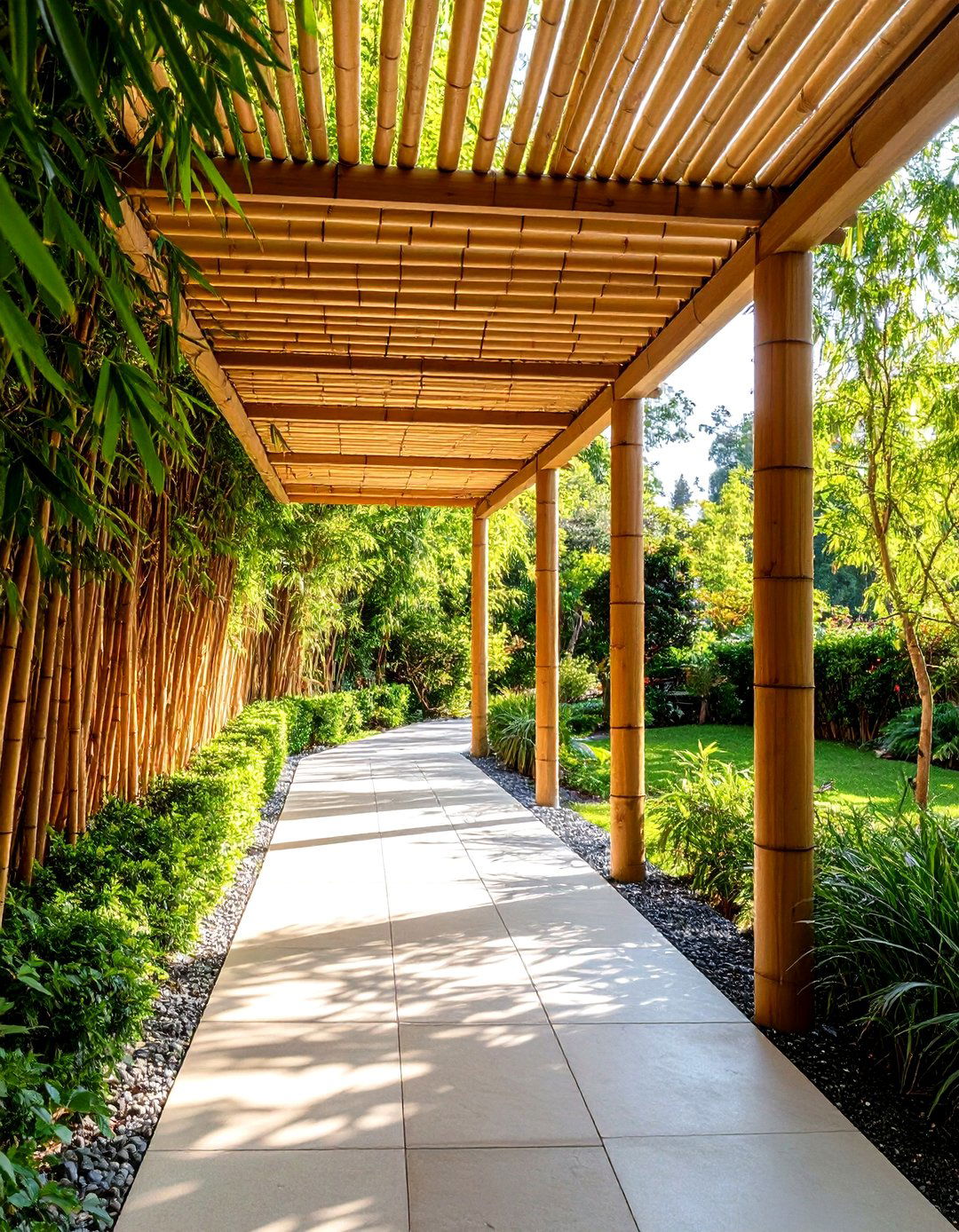
For a natural, budget-friendly look, bamboo or reed roll-up shades attach to porch ceilings or pergola rafters. Cut from sustainable bamboo or reed poles woven into mats, they offer semi-opaque coverage that filters sunlight while preserving airflow. Easy to install with simple hooks and pulleys, these shades roll up neatly when not in use. Their earthy tones blend seamlessly with garden landscapes and complement tropical or bohemian décor. Although they provide less complete UV protection than heavy fabrics, they’re ideal for mild climates and can be layered over a traditional roof or pergola to add texture and warmth.
8. Cantilever Umbrellas
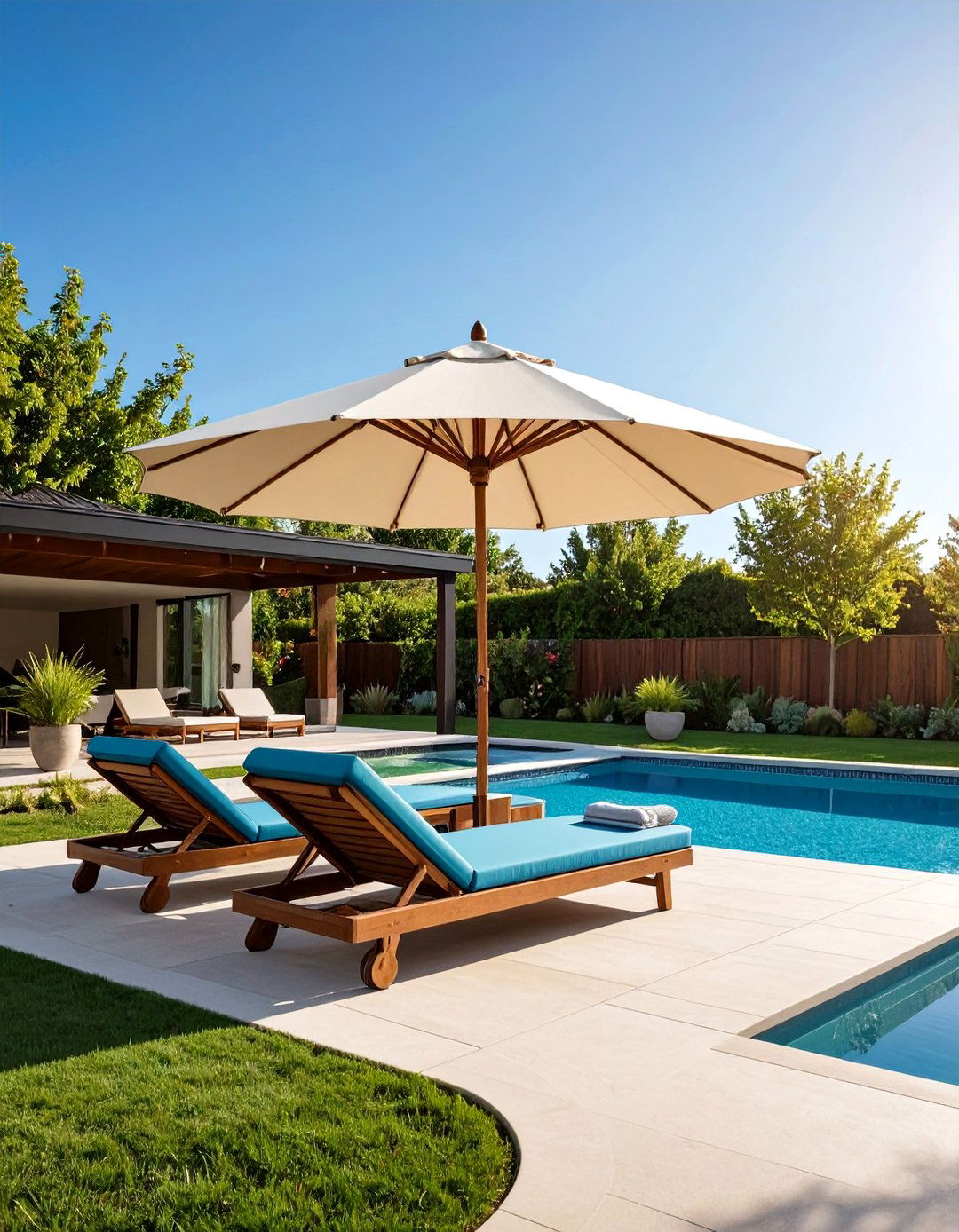
Cantilever umbrellas free up ground space by supporting the canopy from an offset arm, so there’s no central pole to obstruct seating. The weighted base and sturdy ribs hold large, often rectangular or square canopies that can rotate 360 degrees. With crank-lift and tilt features, they let you chase shade as the sun moves. Fabric options range from solution-dyed acrylics to quick-dry synthetics. While pricier than traditional market umbrellas, cantilever models excel in usability and aesthetics, particularly over dining sets, lounge areas, or poolside cabanas.
9. Pavilion Structures
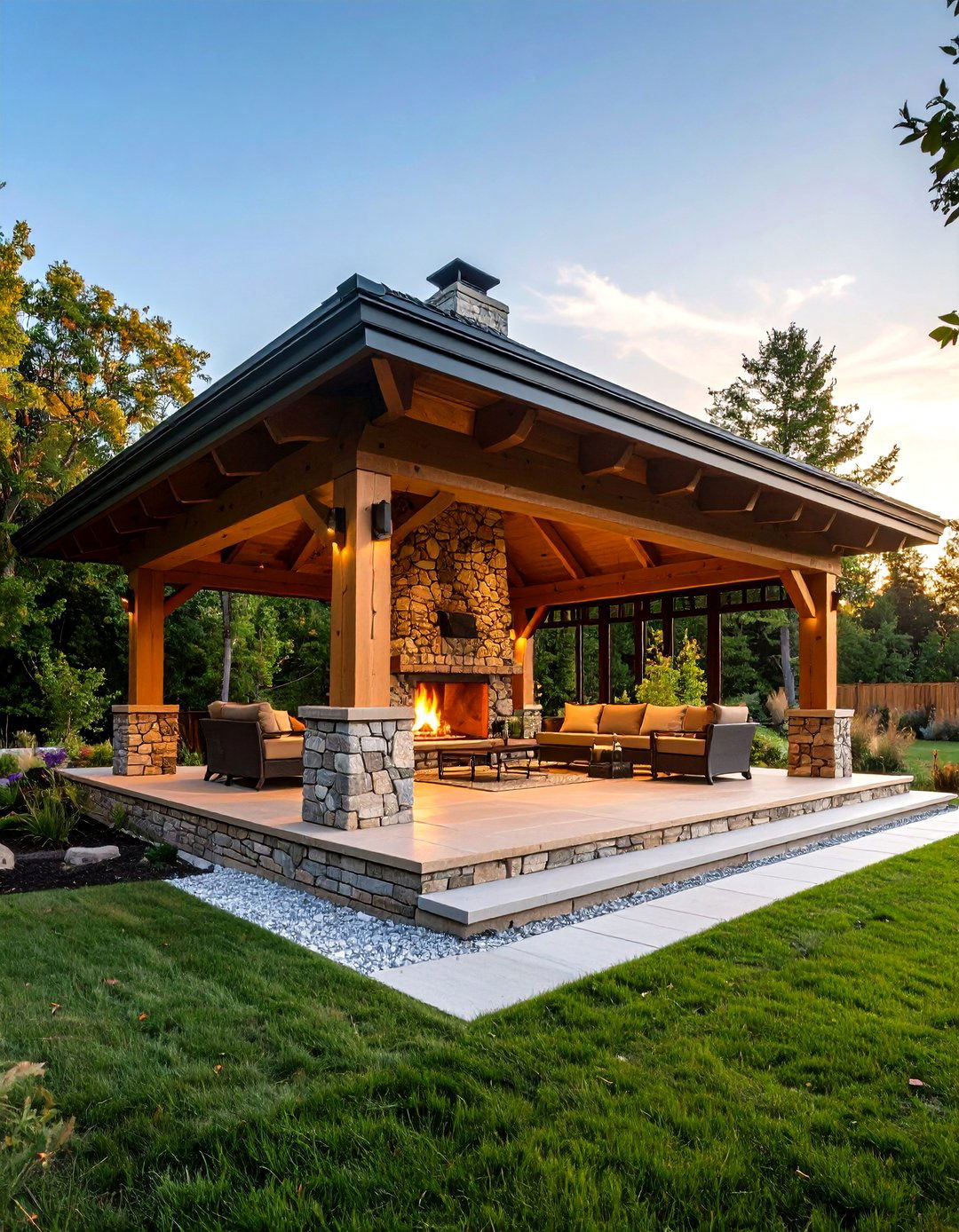
Pavilions are permanent, roofed structures—akin to standalone gazebos but often larger and open on multiple sides. Constructed from wood, metal, or composite materials, they provide a solid ceiling that blocks rain and sun entirely. Inside, you can outfit with lighting, ceiling fans, or even stone fireplaces for year-round use. Pavilions work well over outdoor kitchens, dining areas, or hot tubs. Customizable in size and style, they become architectural focal points, extending your living space and blurring indoor–outdoor boundaries.
10. Green Roofs and Living Canopies
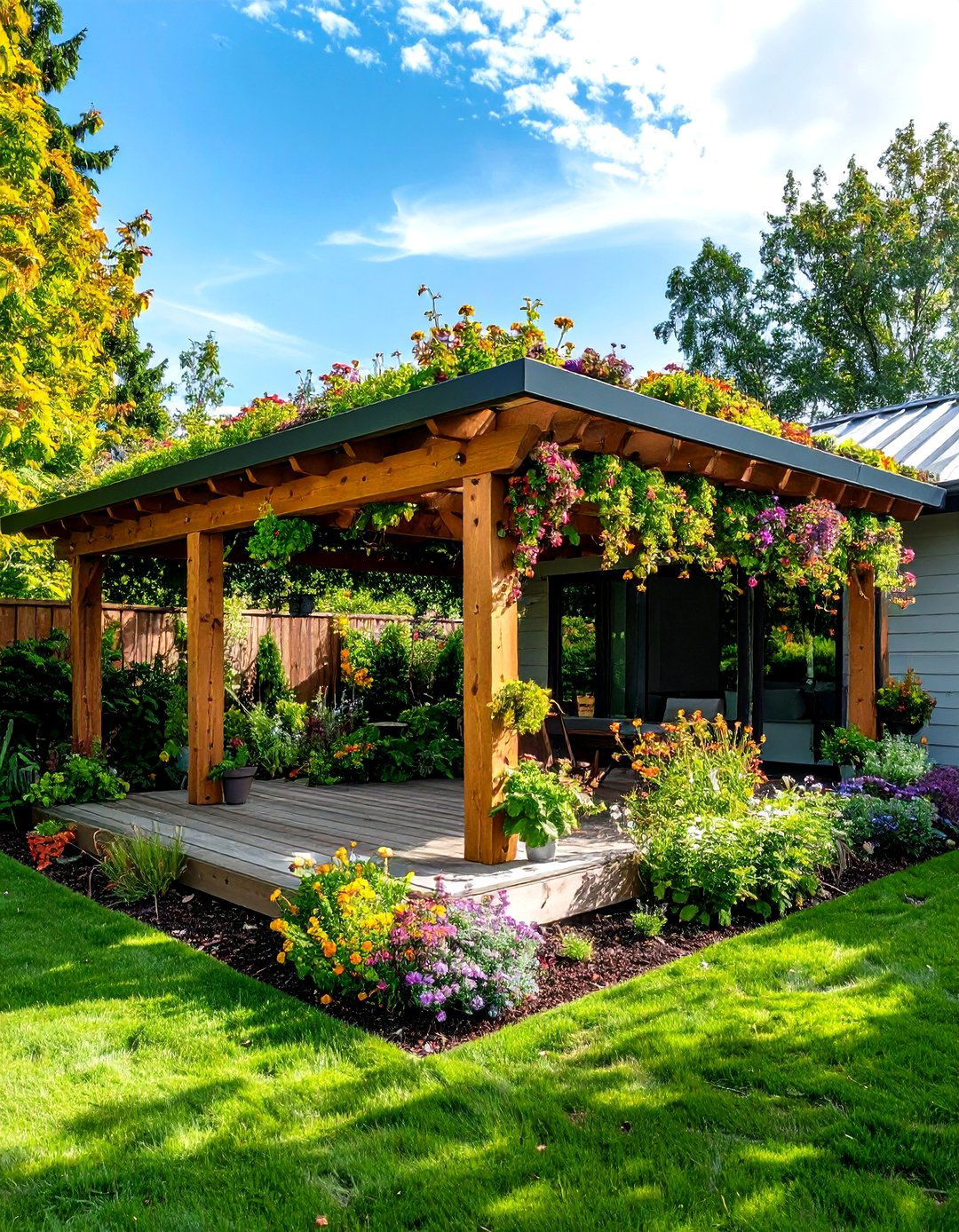
Green roofs aren’t just for commercial buildings—on small structures or pergolas, they create a lush, living blanket of sedums, grasses, and trailing plants. These lightweight, modular trays lay atop waterproof membranes, absorbing up to 75% of rainfall and cooling beneath spaces by several degrees. A living canopy above a deck or pavilion offers natural insulation, air filtration, and habitat for pollinators. Though initial installation costs are higher, green roofs deliver ecological benefits and gradual maintenance requirements, making them a sustainable, eye-catching shade solution.
11. Retractable Side Screens
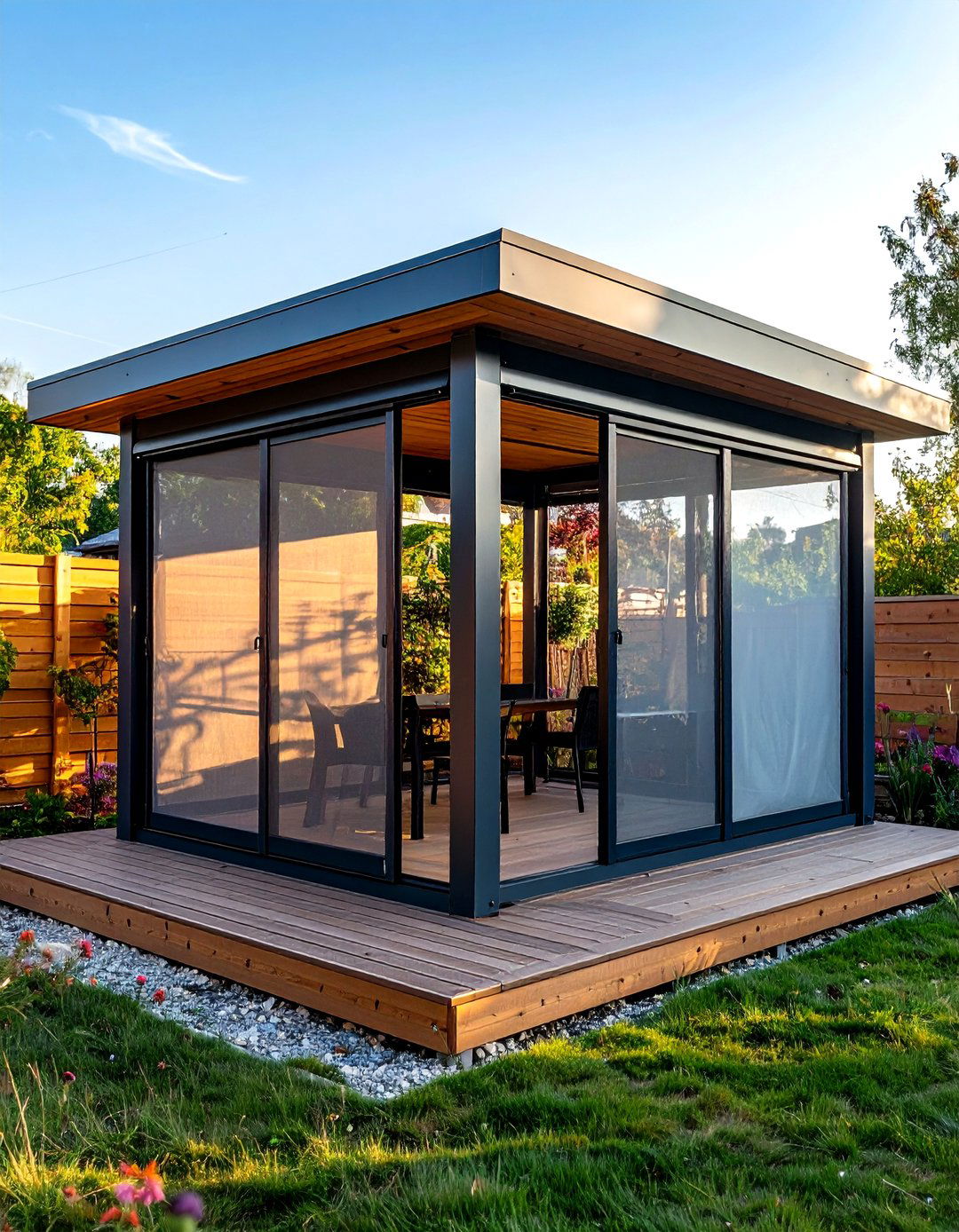
Side screens add privacy and lateral shade to pergolas, gazebos, and porches. Made from the same durable fabrics as awnings, they pull down vertically on tracks to block low-angle sun, breezes, and neighboring views. When not needed, they retract into slim housings. Manual or motorized options integrate seamlessly into existing structures. Side screens transform open-air spaces into sheltered verandas, enabling comfortable use during bright mornings or late-day sun without sacrificing airflow or sightlines entirely.
12. Tree-Canopy Frameworks
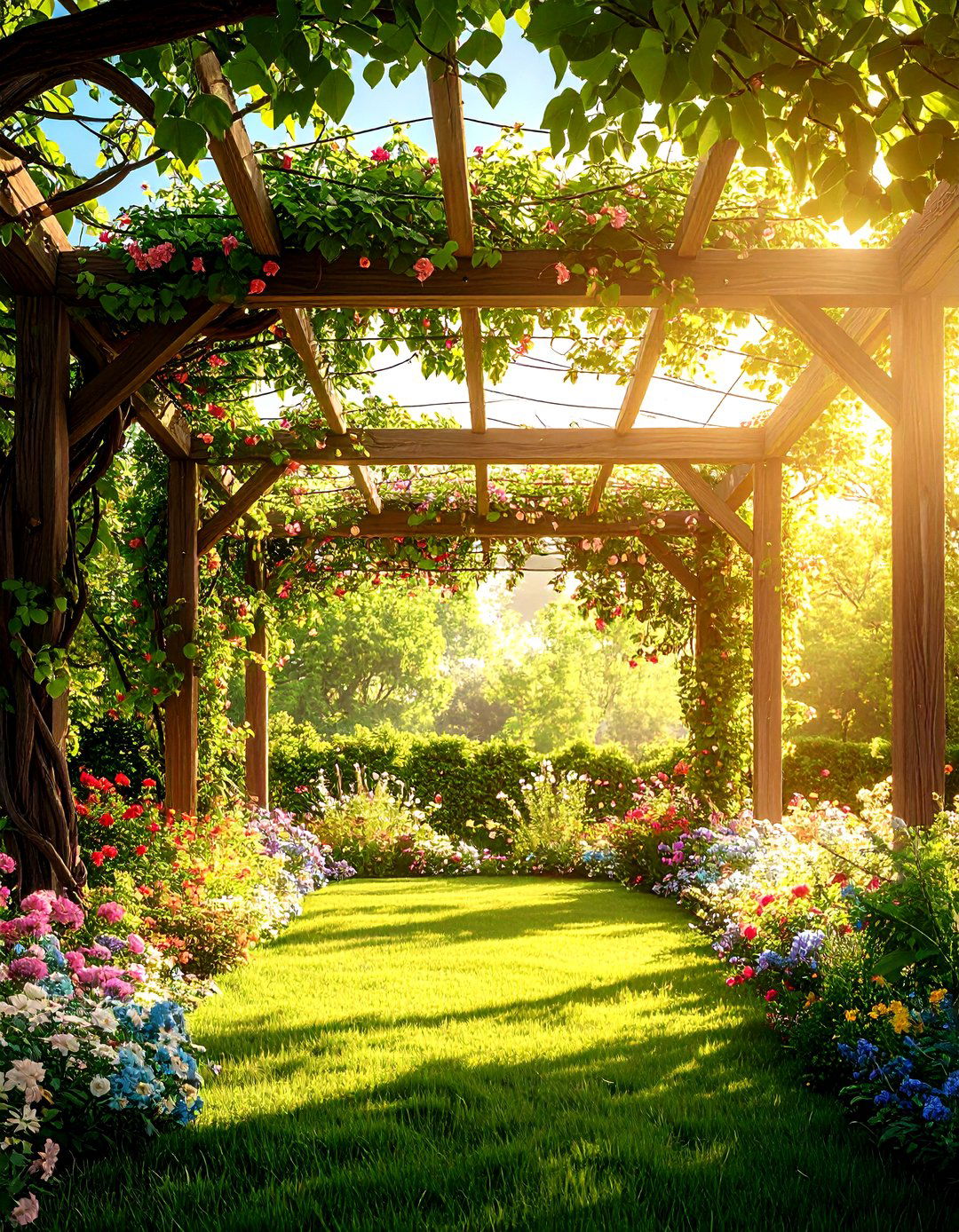
Mimicking a forest canopy, engineered tree-canopy frameworks use high, spaced posts with crisscrossing cables that guide the growth of climbing vines or epiphytes. Unlike dense pergolas, these allow more filtered light and an airy feeling, with shade evolving as plants grow. Species like wisteria, passionflower, or even hops create seasonal statements, while native vines attract pollinators. The framework itself serves as a sculptural element, and annual pruning tailors the density. Such installations offer dynamic, living shade that changes color and texture year-round.
13. Shade Fabric Arbors
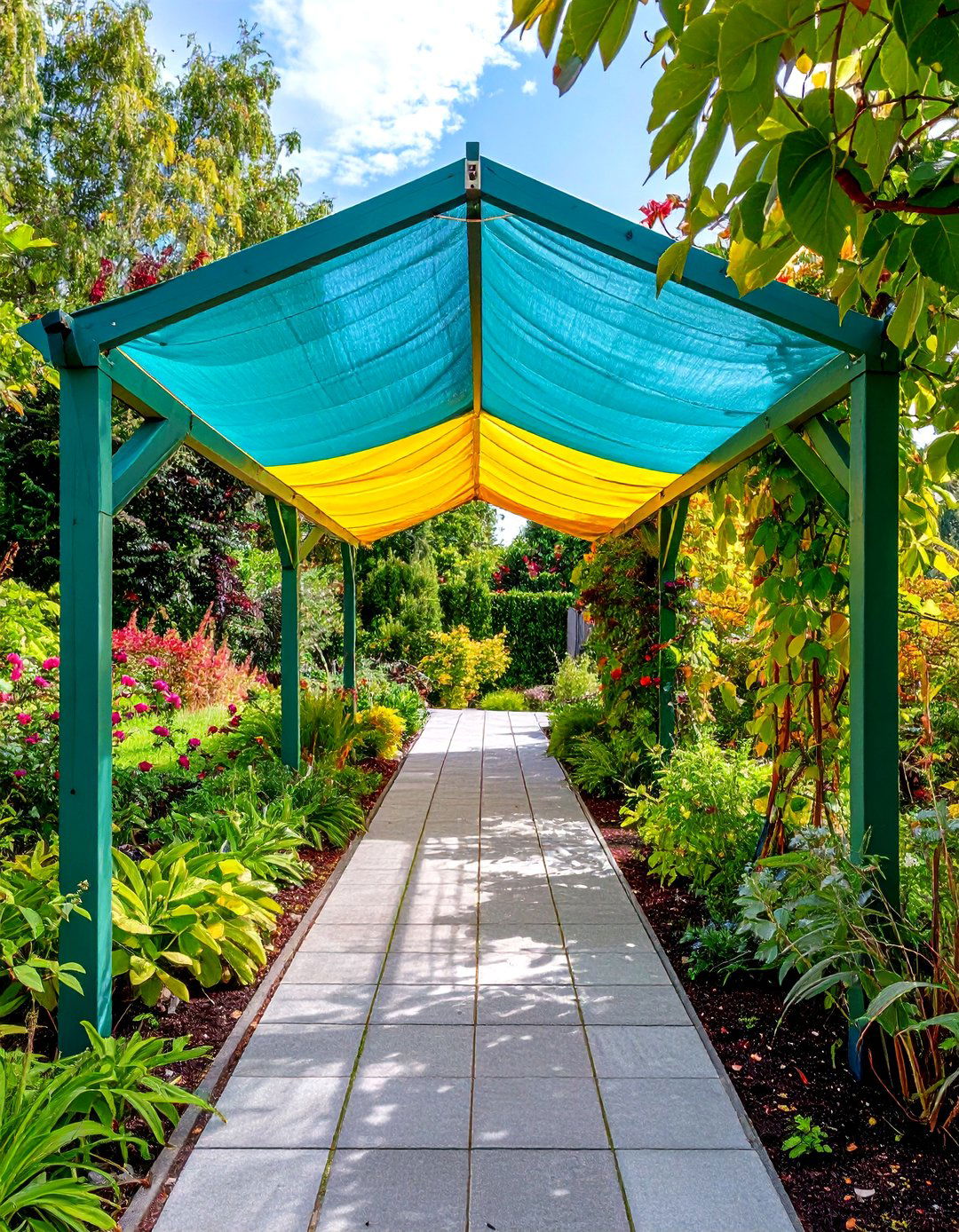
Arbors typically frame walkways or garden entries, but when topped with semi-permanent shade fabric, they double as narrow shaded corridors. Heavy-duty shade cloth stretches across the top and tucks under side rails, providing 70–90% UV protection. Supported on timber or metal posts, shade-cloth arbors are quick to build and customizable in length. They guide guests through sun-exposed areas, connect patios to gardens, or channel foot traffic between outdoor rooms. As an affordable alternative to solid roofs, shade-cloth arbors merge form and function with minimal maintenance.
14. Bamboo Tiki Huts
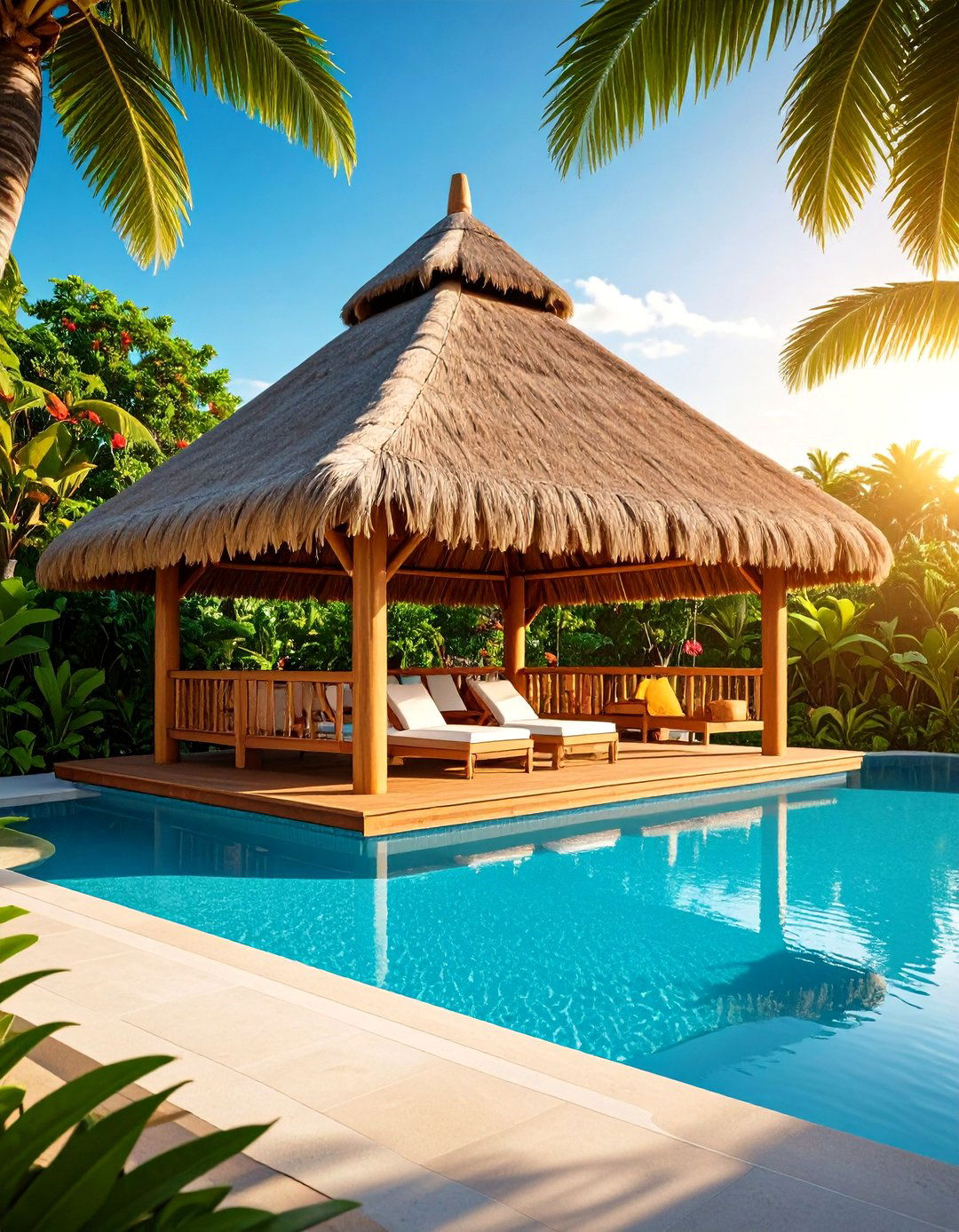
For a tropical resort vibe, bamboo tiki huts—also called palapas—use thick bamboo poles and thatched palm or reed roofs to craft shady cabanas. The natural thatch provides ventilation and a rustic look, while bamboo’s tensile strength supports wide spans without central posts. Tiki huts are perfect poolside, over loungers, or adjacent to outdoor bars. While thatch may require periodic replacement, its environmental credentials and distinct aesthetic make palapas a standout choice for themed gardens or coastal retreats seeking shade with island flair.
15. Architectural Shade Screens

Laser-cut metal or wood panels add a contemporary twist by casting intricate shadow patterns on patios or walls. These screens mount vertically on posts or as an accent wall, filtering direct sunlight and framing views. Designs range from geometric perforations to botanical silhouettes. Powder-coated steel or weather-resistant wood holds up outdoors, and backlighting at night creates dramatic effects. Architectural screens can wrap around dining areas, border pool decks, or visually divide large yards—all while delivering artful shade.
16. Outdoor Curtain Systems
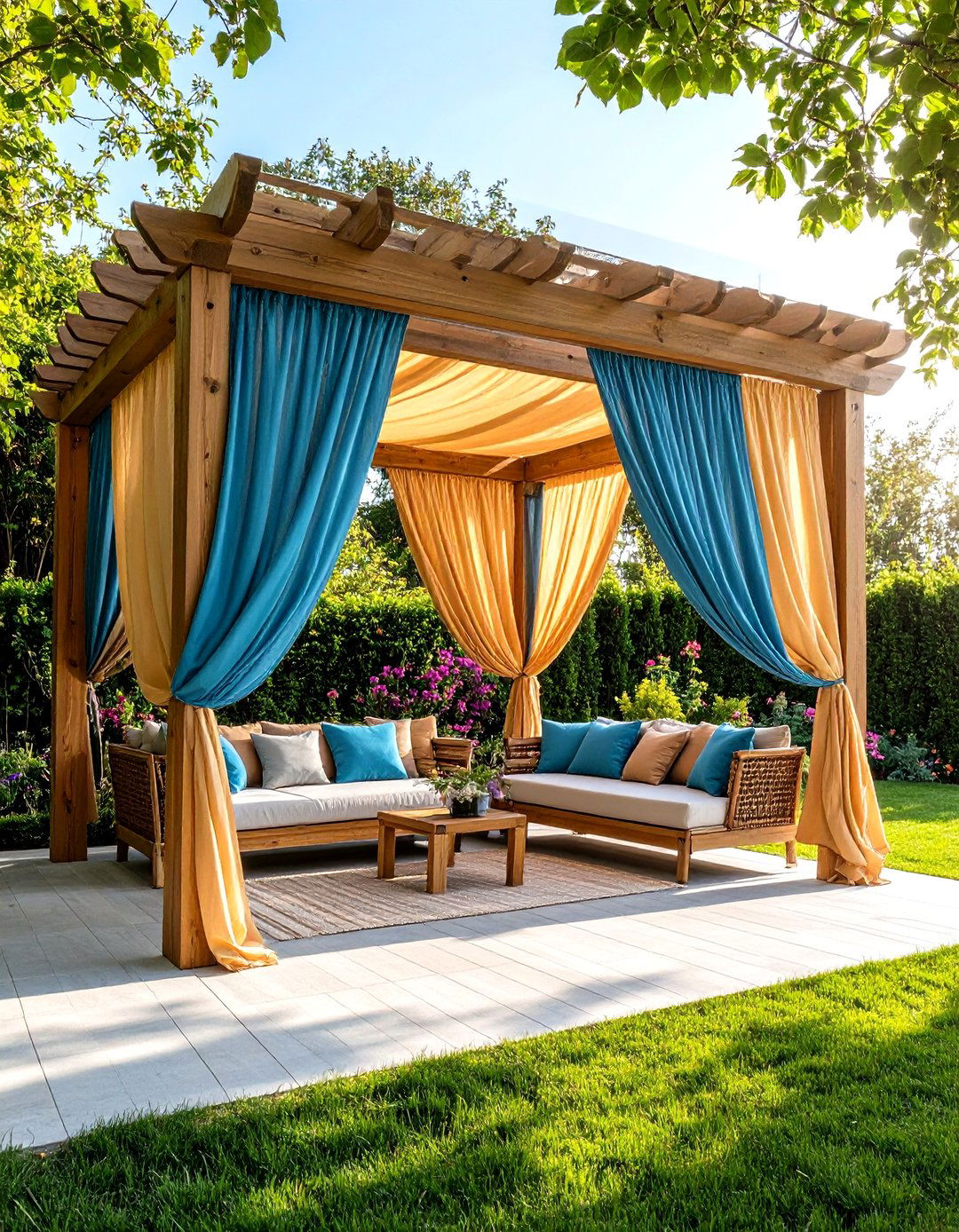
Heavy-duty outdoor drapery hung from ceiling tracks turns patios and pergolas into flexible, resort-style lounges. Weather-resistant fabrics in neutral tones or bold stripes slide easily to frame vistas or cordon off sections for privacy. Tie-backs keep curtains neatly open, and weighted hems prevent billowing. Outdoor curtains soften hard architectural lines and offer adjustable shade and wind protection without permanent fixtures. Add coordinating throw pillows and rugs for a cohesive look that feels like an al fresco living room.
17. Sail-Shade Pergola Combos
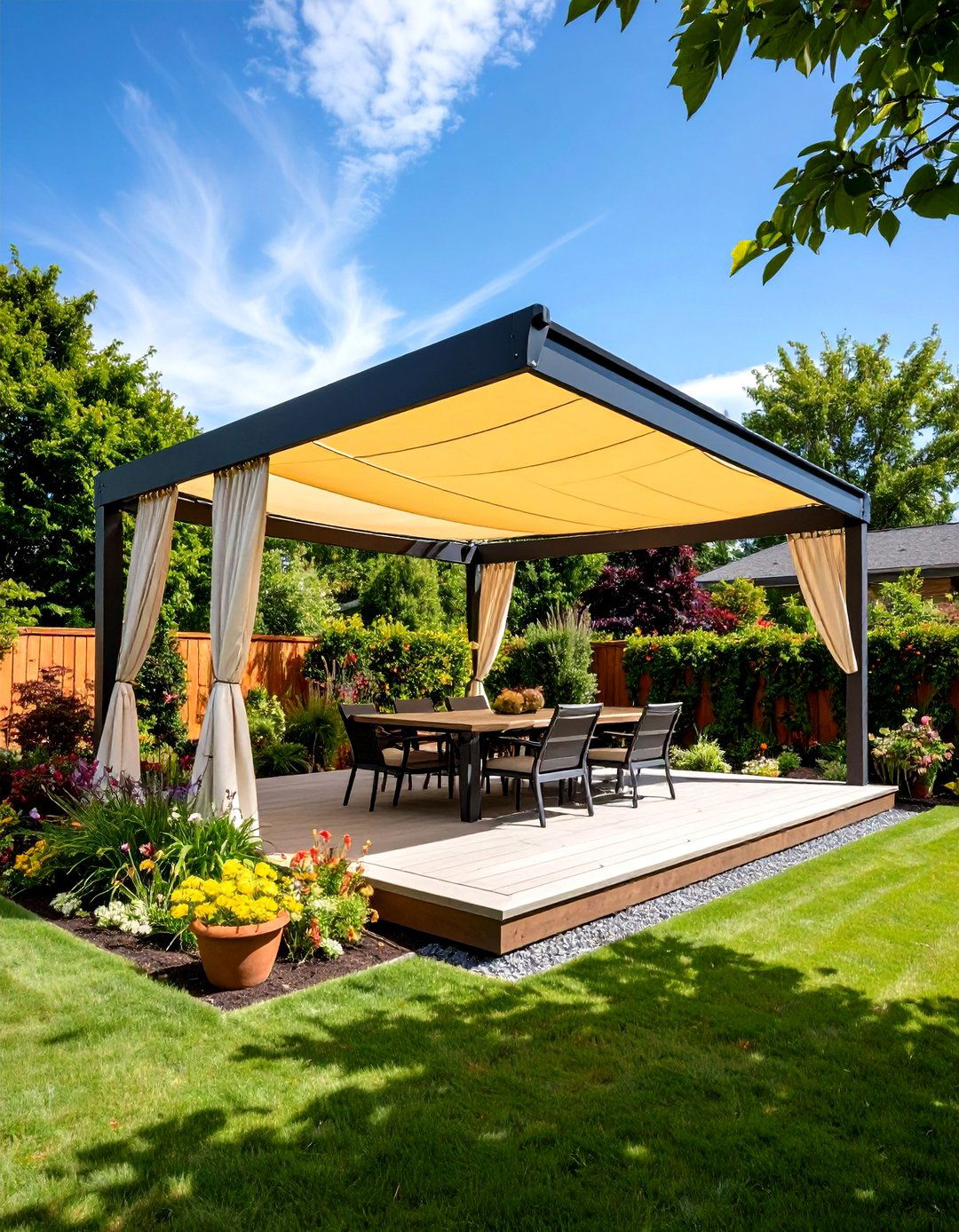
Pairing shade sails with pergola frames lets you enjoy the architectural presence of timber or metal beams alongside flexible, overlapping canopies. Sails anchor to pergola rafters and extend beyond the frame for broader coverage. Their angular shapes contrast with straight lines, imparting a dynamic feel. At different heights, multiple sails create depth and visual intrigue. This hybrid suits contemporary gardens and pool landscapes, offering both the solidity of a pergola and the playful geometry of shade sails.
18. Tensioned Fabric Canopies
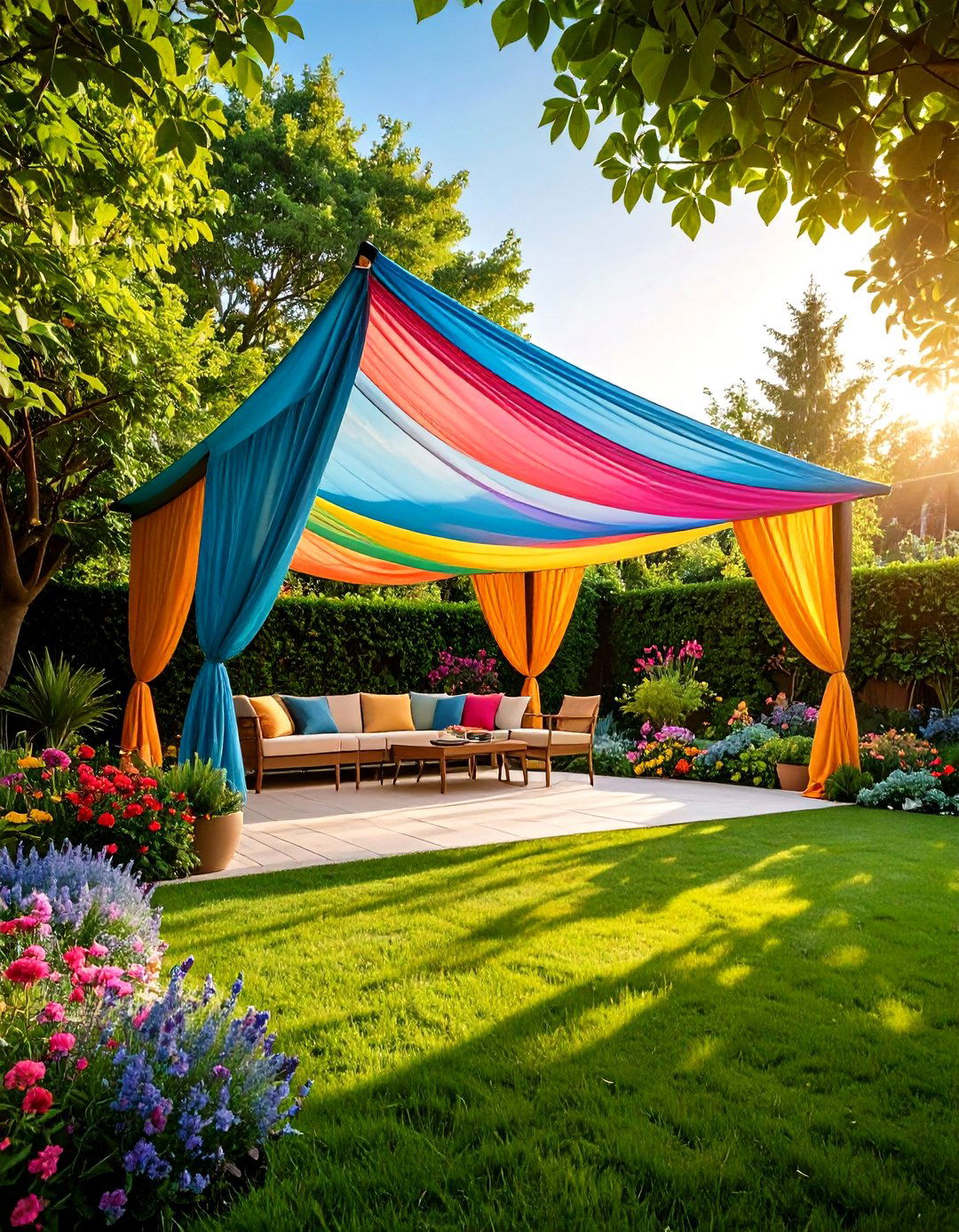
Tensioned membrane structures—often seen in public plazas—scale down beautifully for residential use. Architectural fabrics like PTFE-coated fiberglass or PVC stretch between mast or frame supports, forming sculptural curves that resist wind and snow. While engineered installation is required, the resulting canopy can span large areas without interior supports. Such canopies work well over driveways, outdoor entertainment zones, or garden courts. Their elegant profiles and high-tech materials deliver a striking, long-lasting shade solution.
19. Garden Gazebos with Built-In Roofs
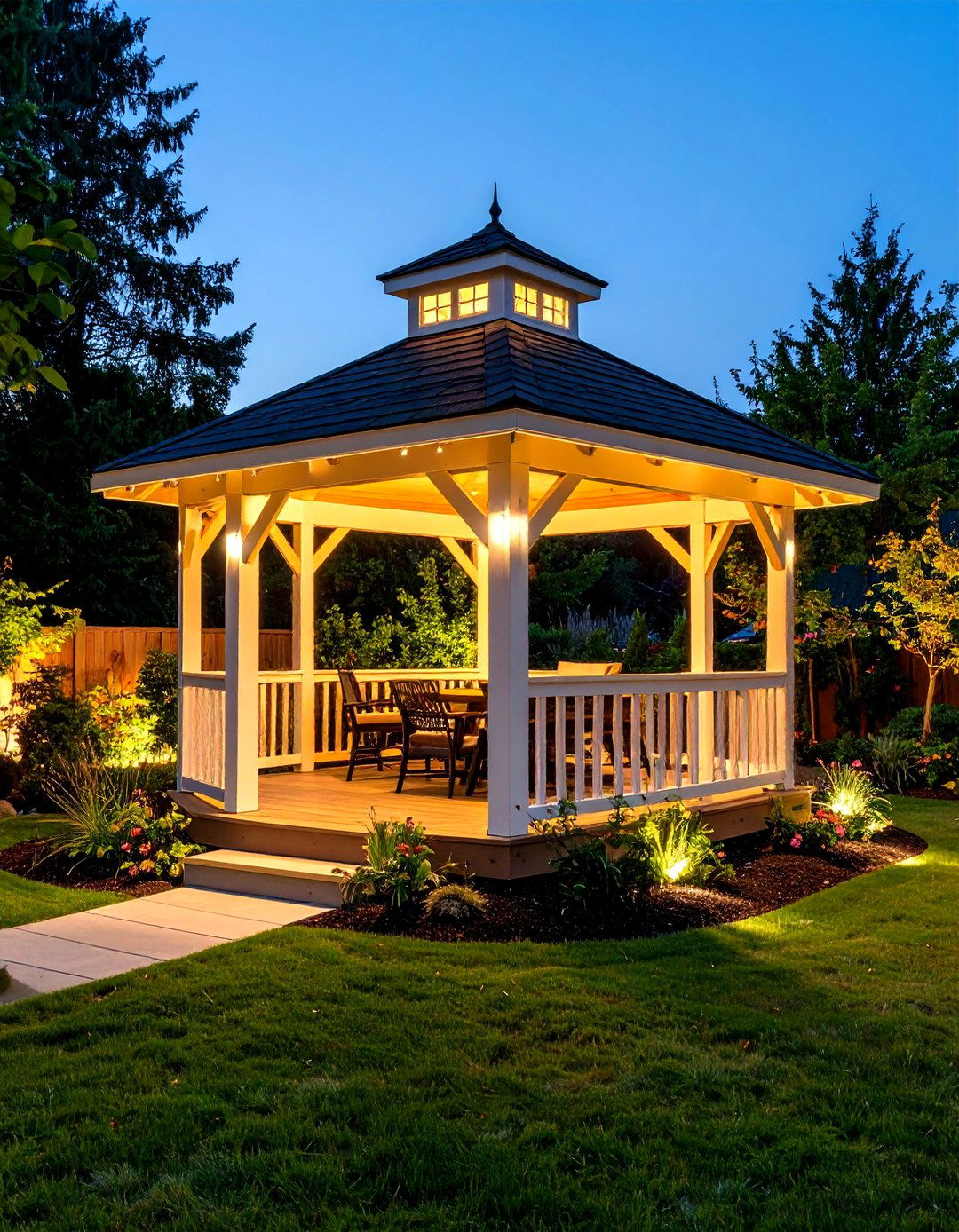
Classic garden gazebos feature solid hips roofs—shingled, metal, or polycarbonate—that offer complete protection from sun and rain. Often octagonal or hexagonal, gazebos serve as garden focal points, perfect for seating, outdoor dining, or tea ceremonies. Built-in benches, planter boxes, and integrated lighting enhance usability. Materials range from cedar for a natural look to powder-coated aluminum for modern appeal. Although more labor-intensive to install, gazebos provide cozy, fully covered retreats that invite relaxation and year-round enjoyment.
20. Clustered Canopy Trees
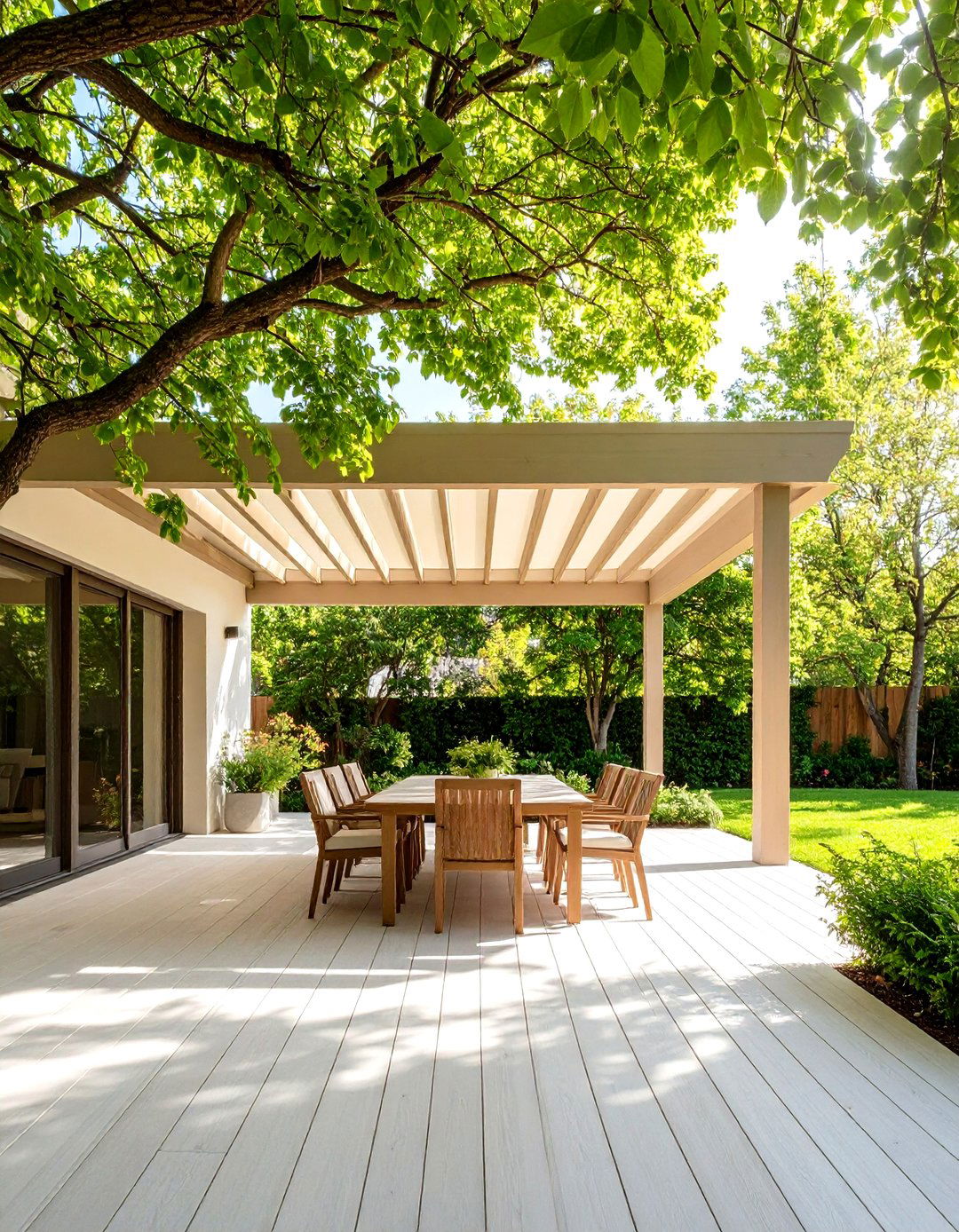
Sometimes the simplest approach is the most elegant: planting a cluster of deciduous canopy trees to create dappled shade. Species like maples, oaks, or ash develop broad crowns that intercept sunlight, while their seasonal leaf drop allows winter light and views. Underplant with shade-tolerant groundcovers or seating areas to craft natural nooks. Though trees take years to mature, their environmental benefits—cooling, air purification, wildlife habitat—outshine any man-made structure. Strategic placement near patios or pool decks transforms hardscapes into living, breathing sanctuaries.
Conclusion:
From motorized louvers and retractable fabrics to living roofs and tree-canopy plantings, these twenty shade ideas demonstrate the versatility of modern—and timeless—shade solutions. Whether you seek the permanence of a pavilion, the flexibility of sail cloth, or the ecological benefits of green roofs and trees, there’s an option to suit every style, budget, and backyard layout. Thoughtful integration of shade not only enhances comfort and UV protection but also defines outdoor rooms, elevates aesthetics, and boosts property value. Embrace one or more of these concepts to turn your outdoor spaces into cool, inviting retreats for years to come.


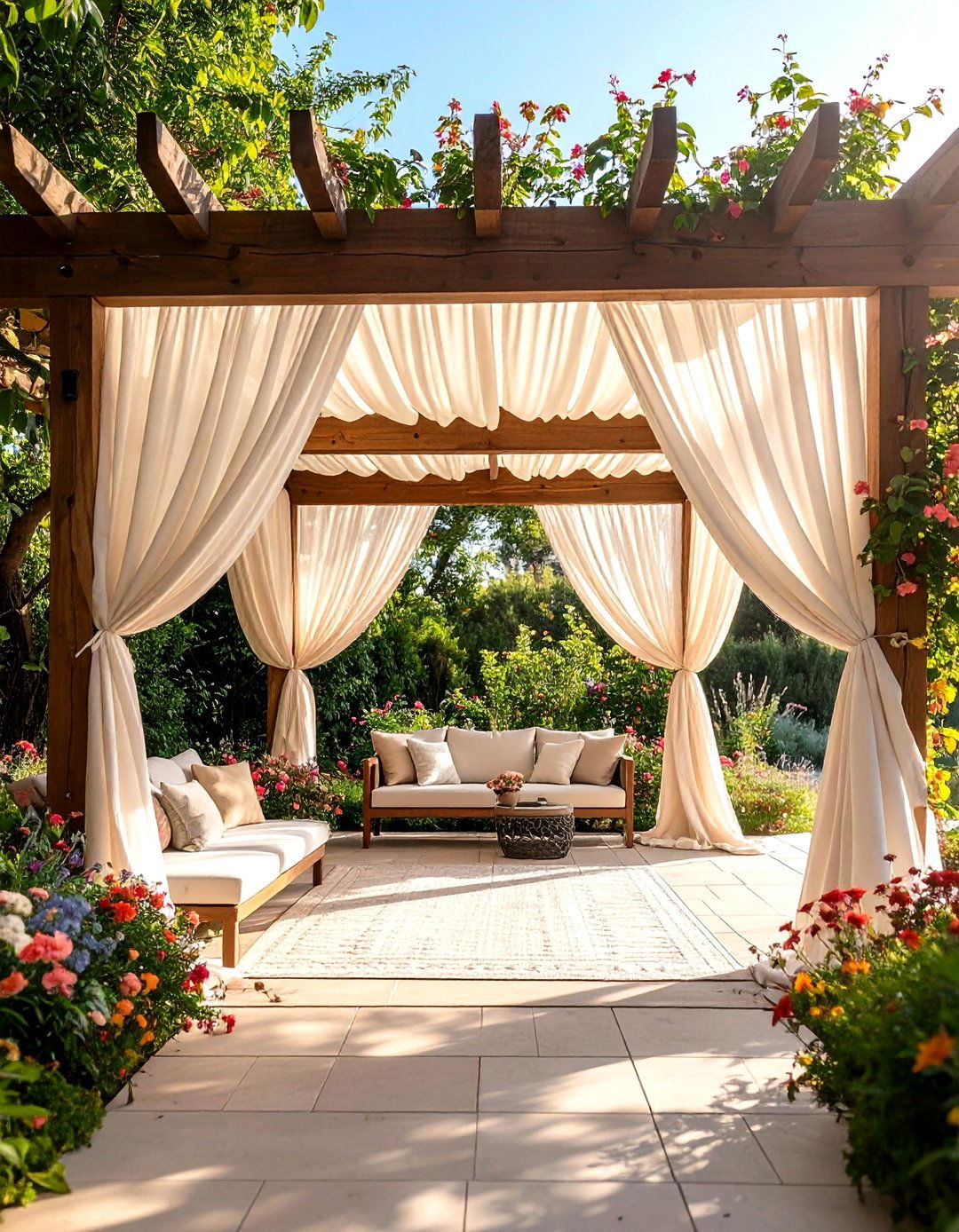
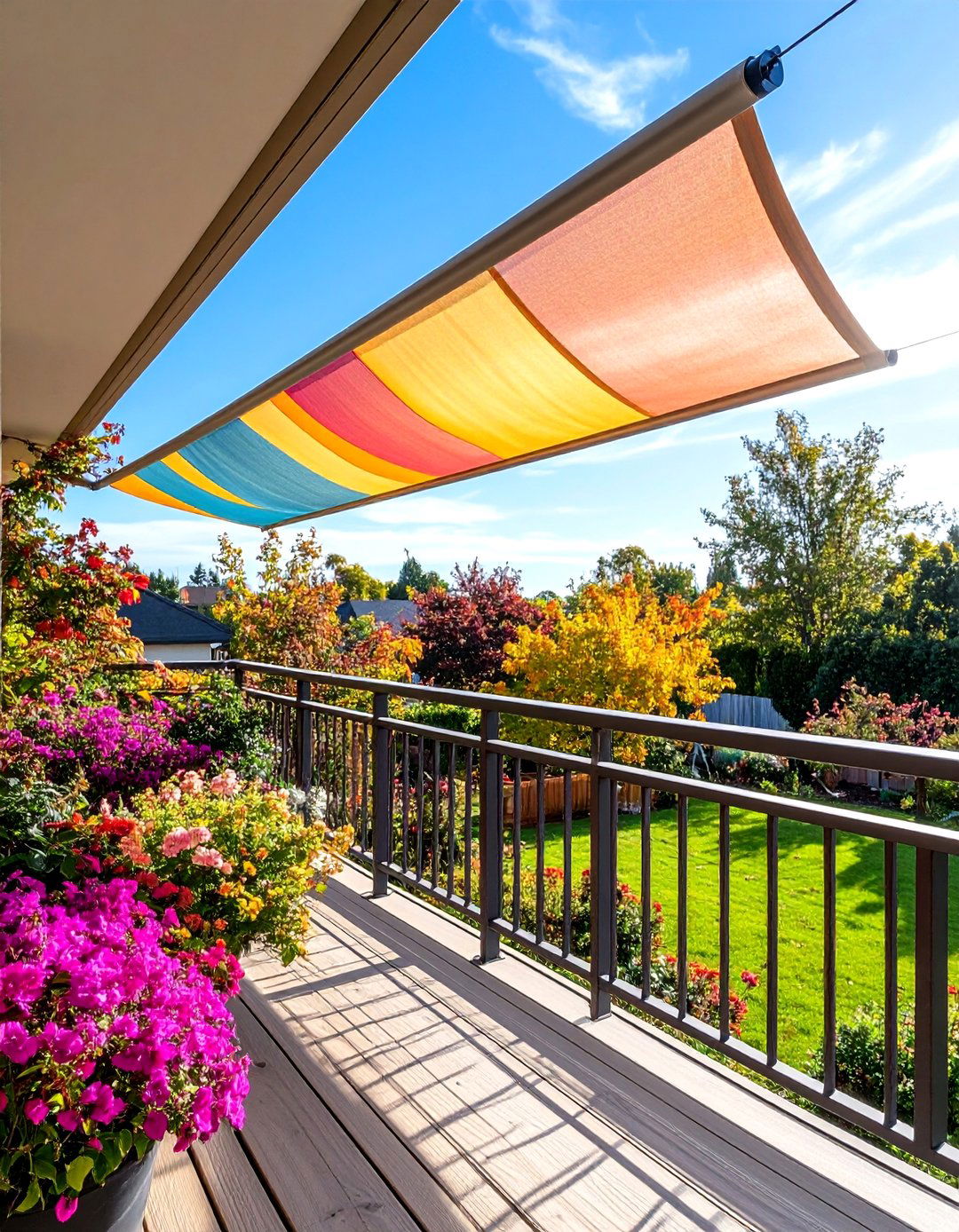
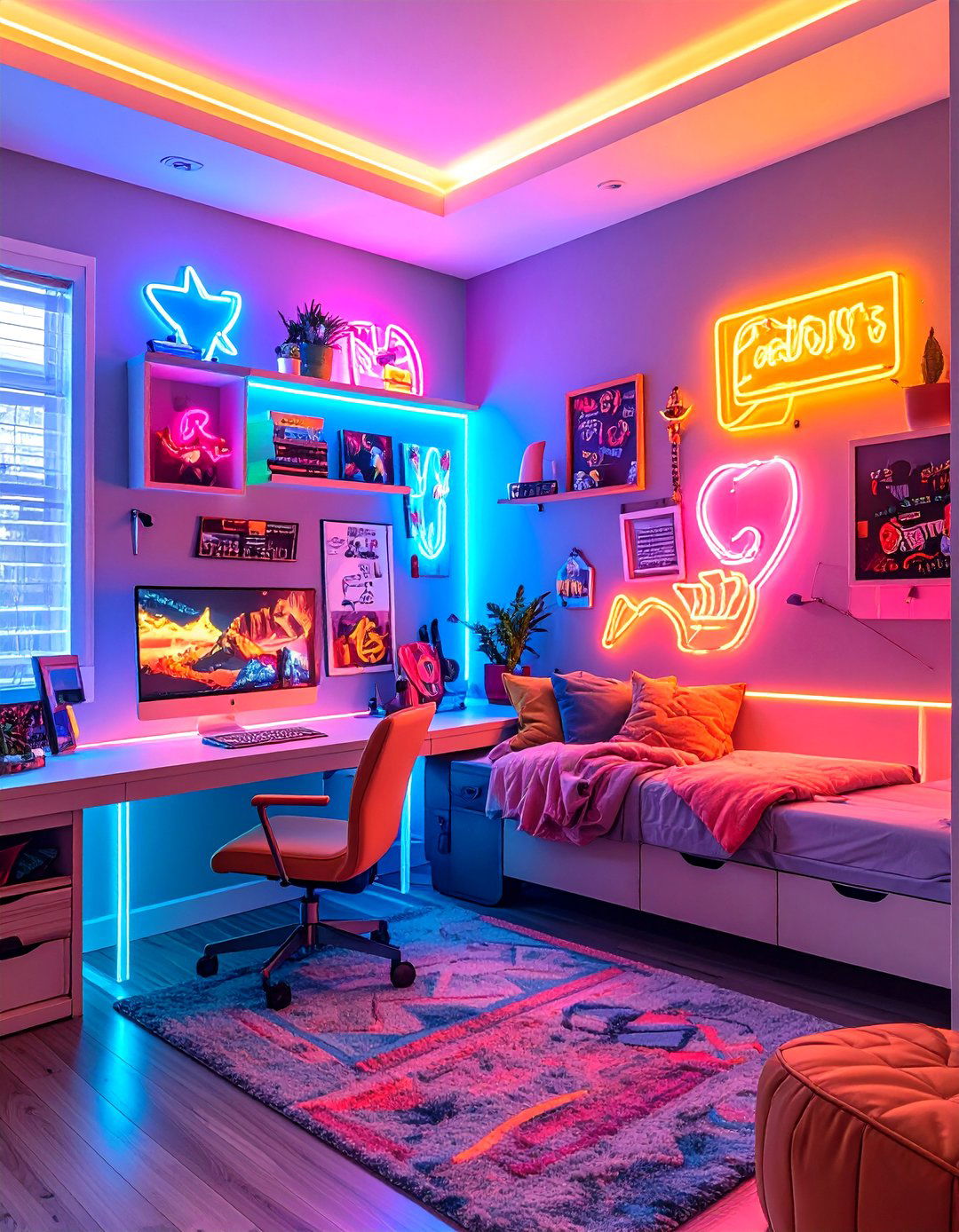
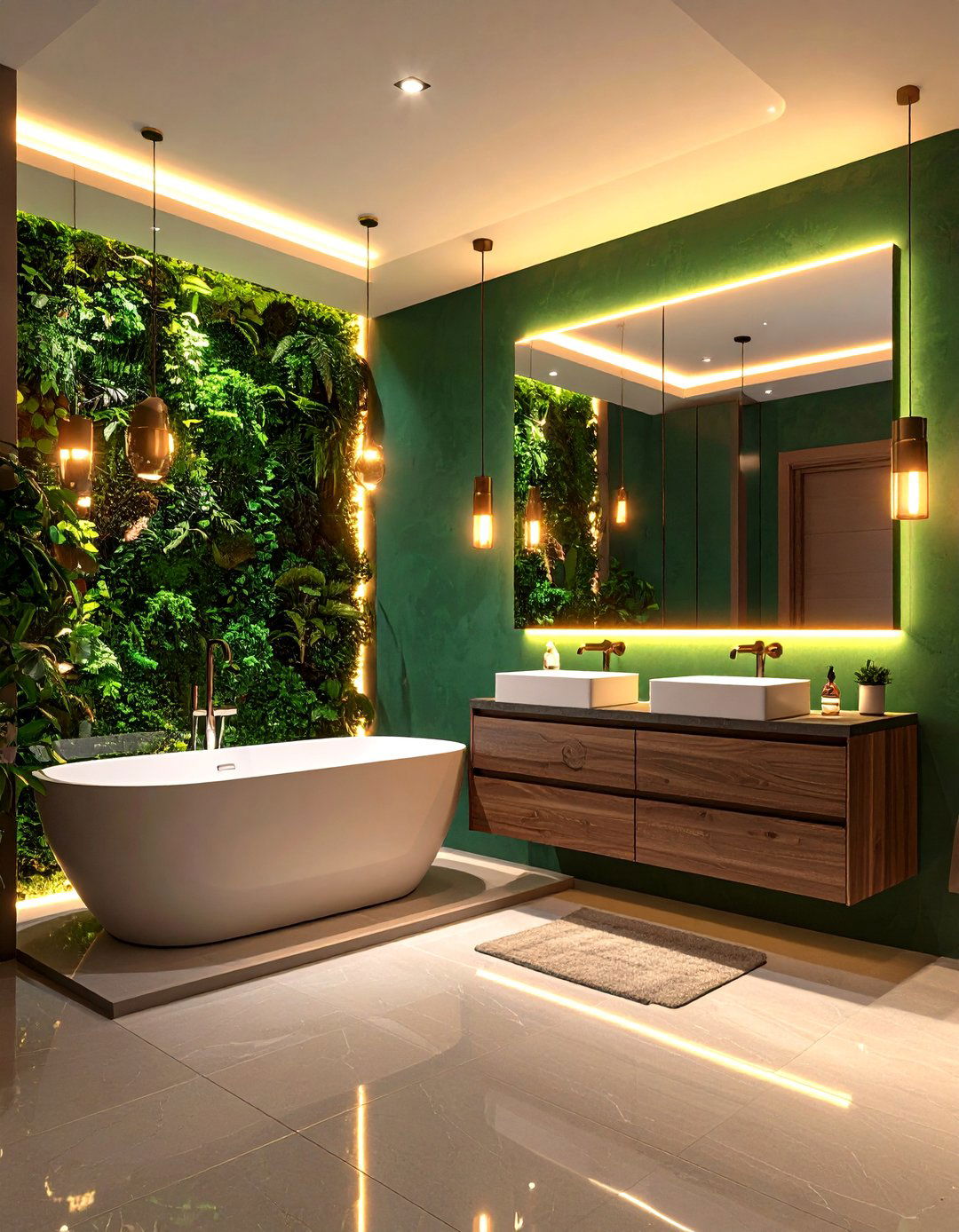
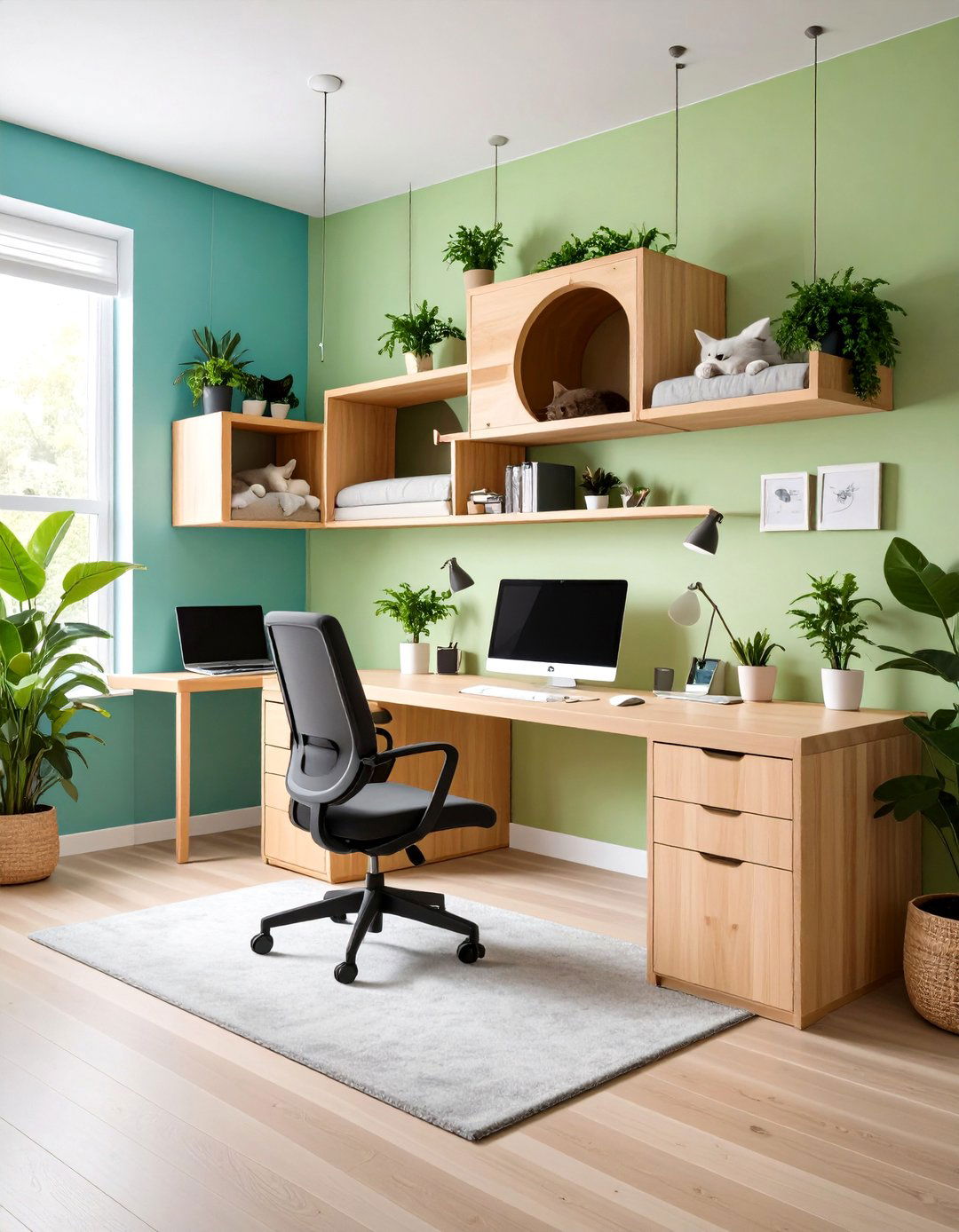
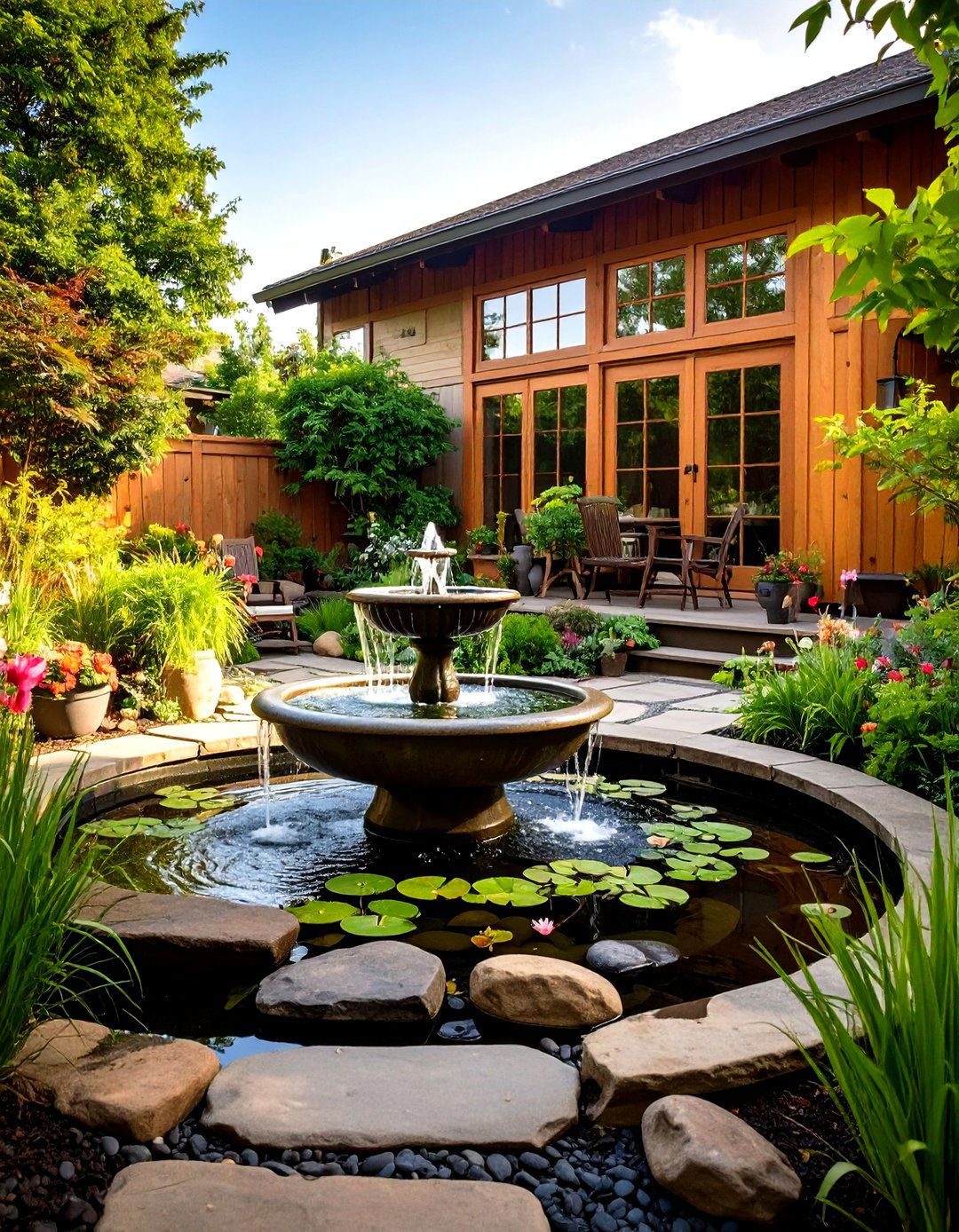
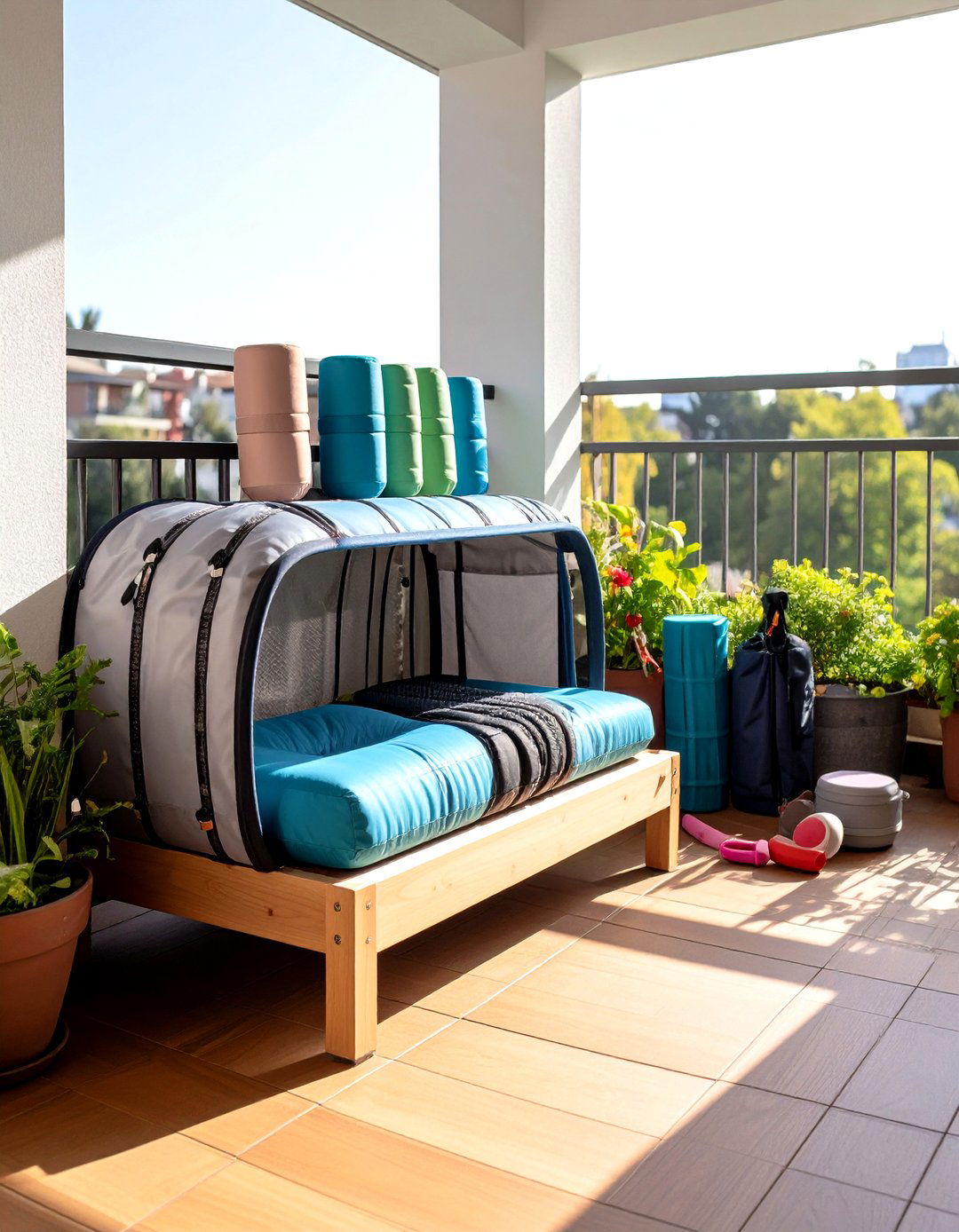
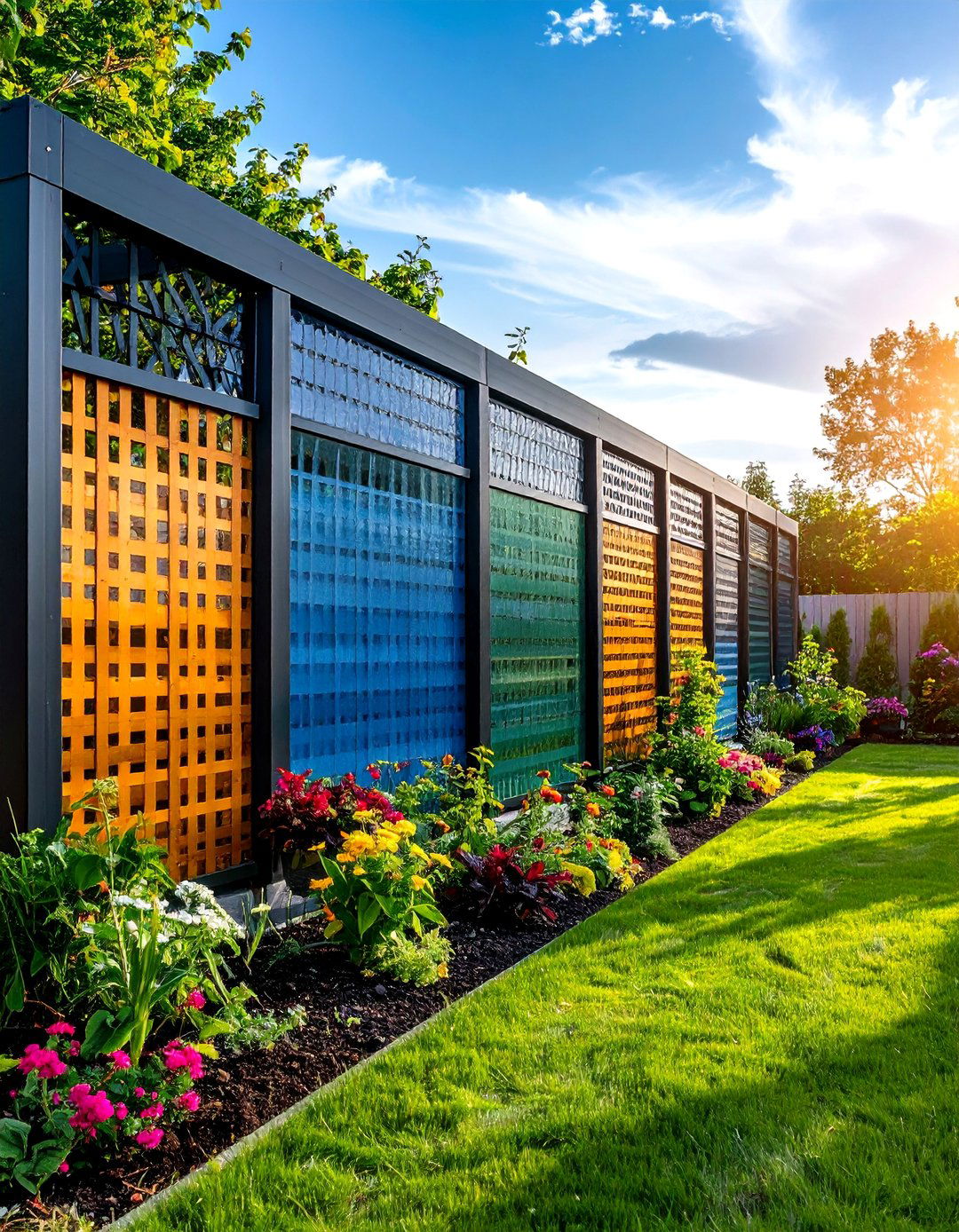

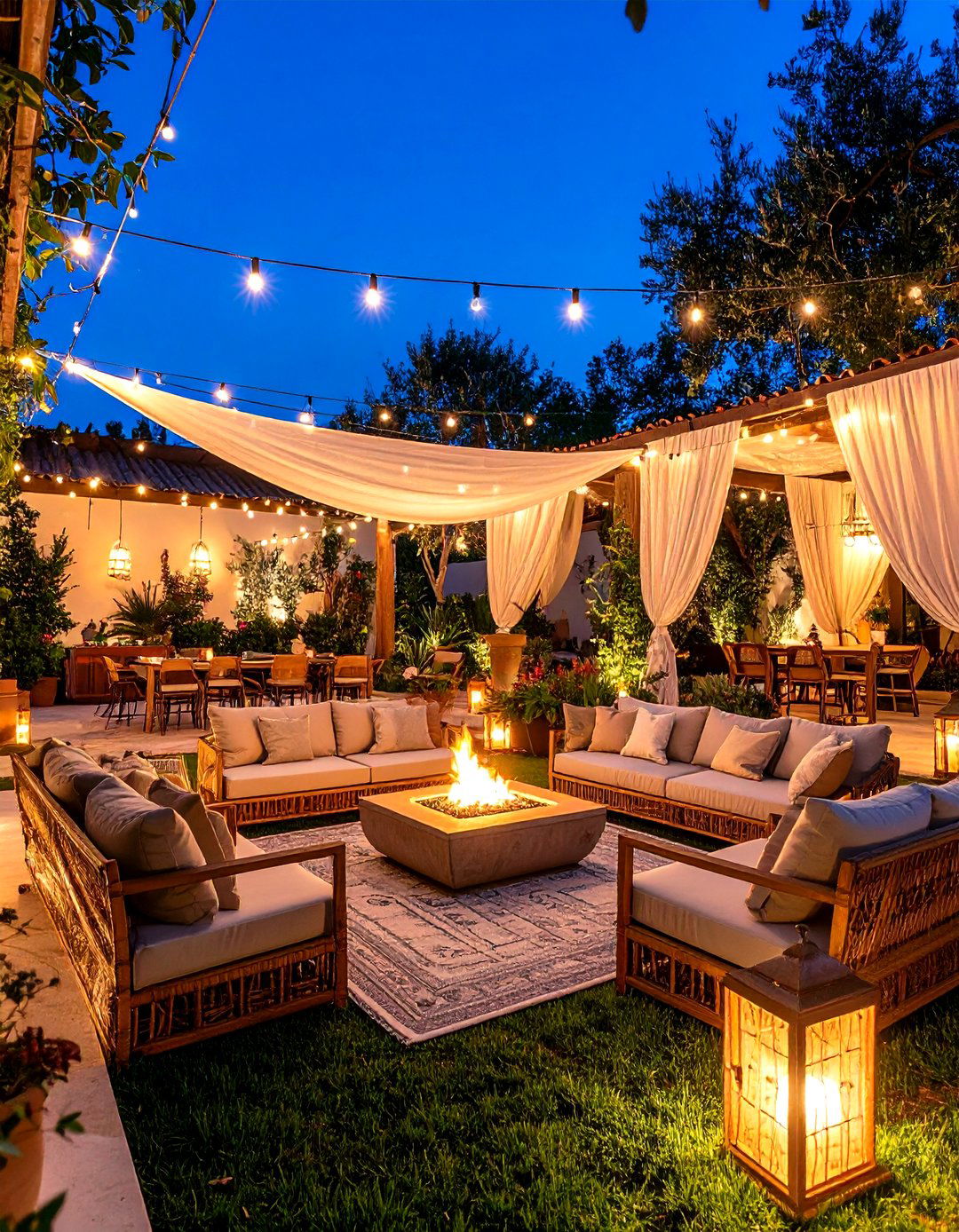

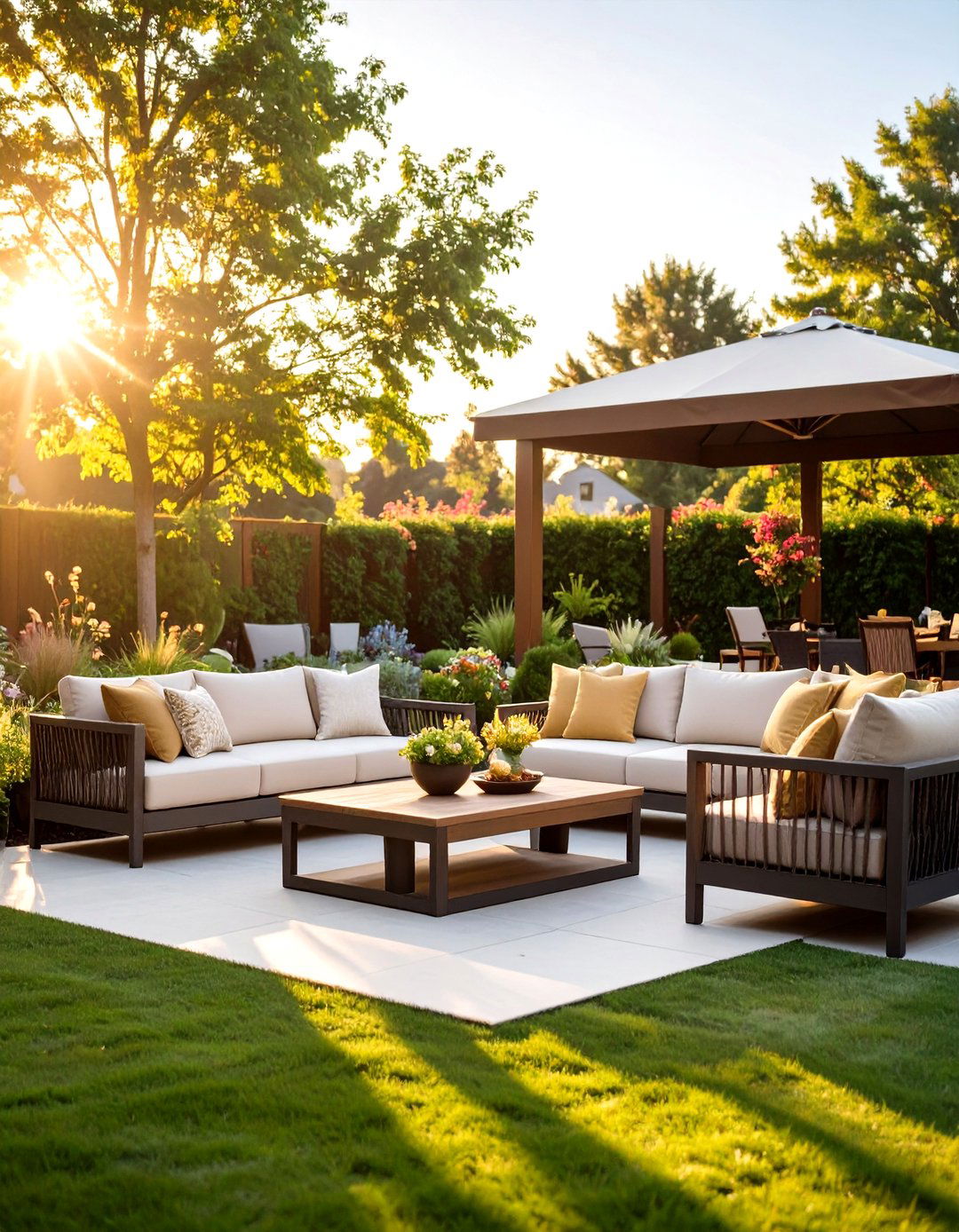
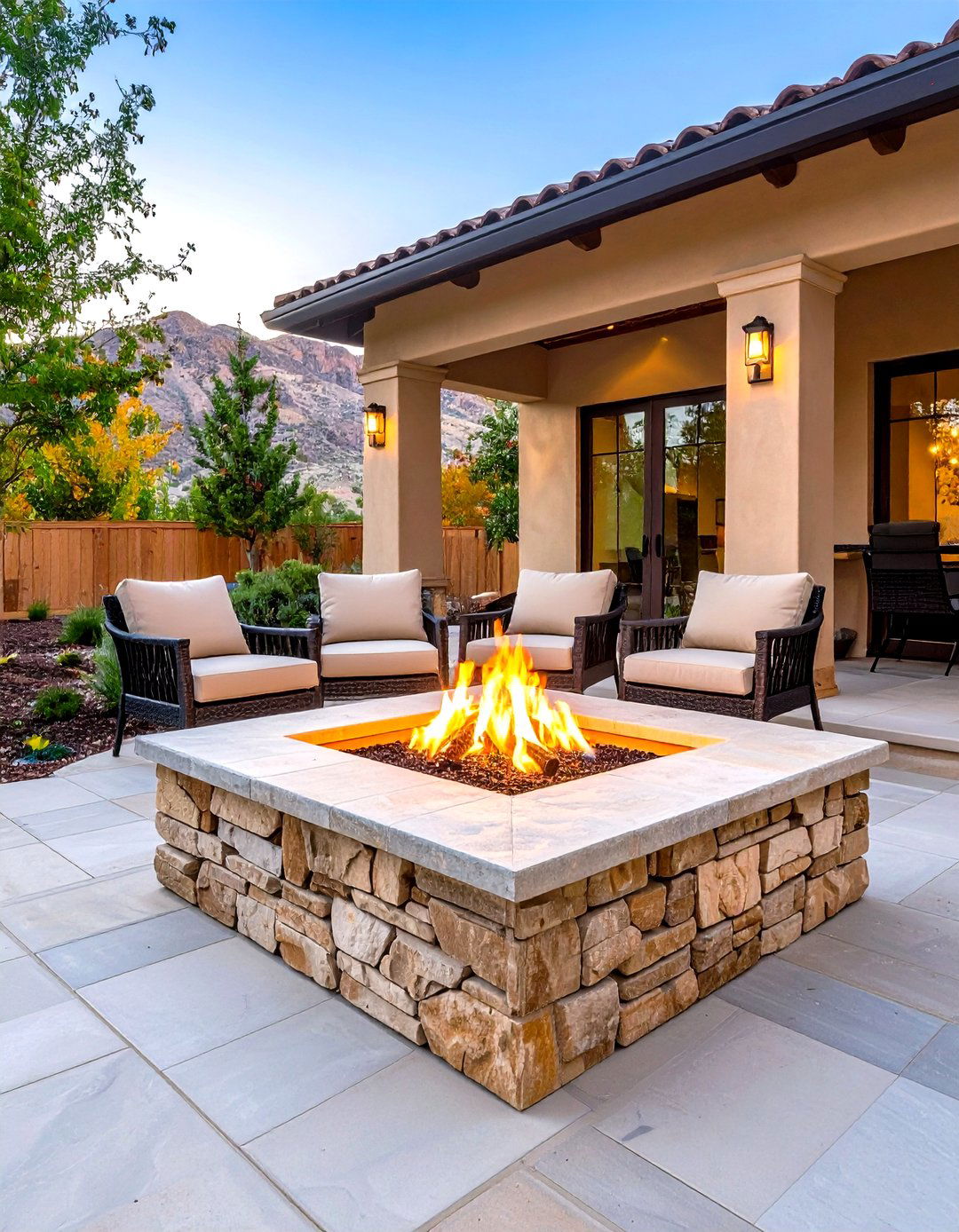
Leave a Reply